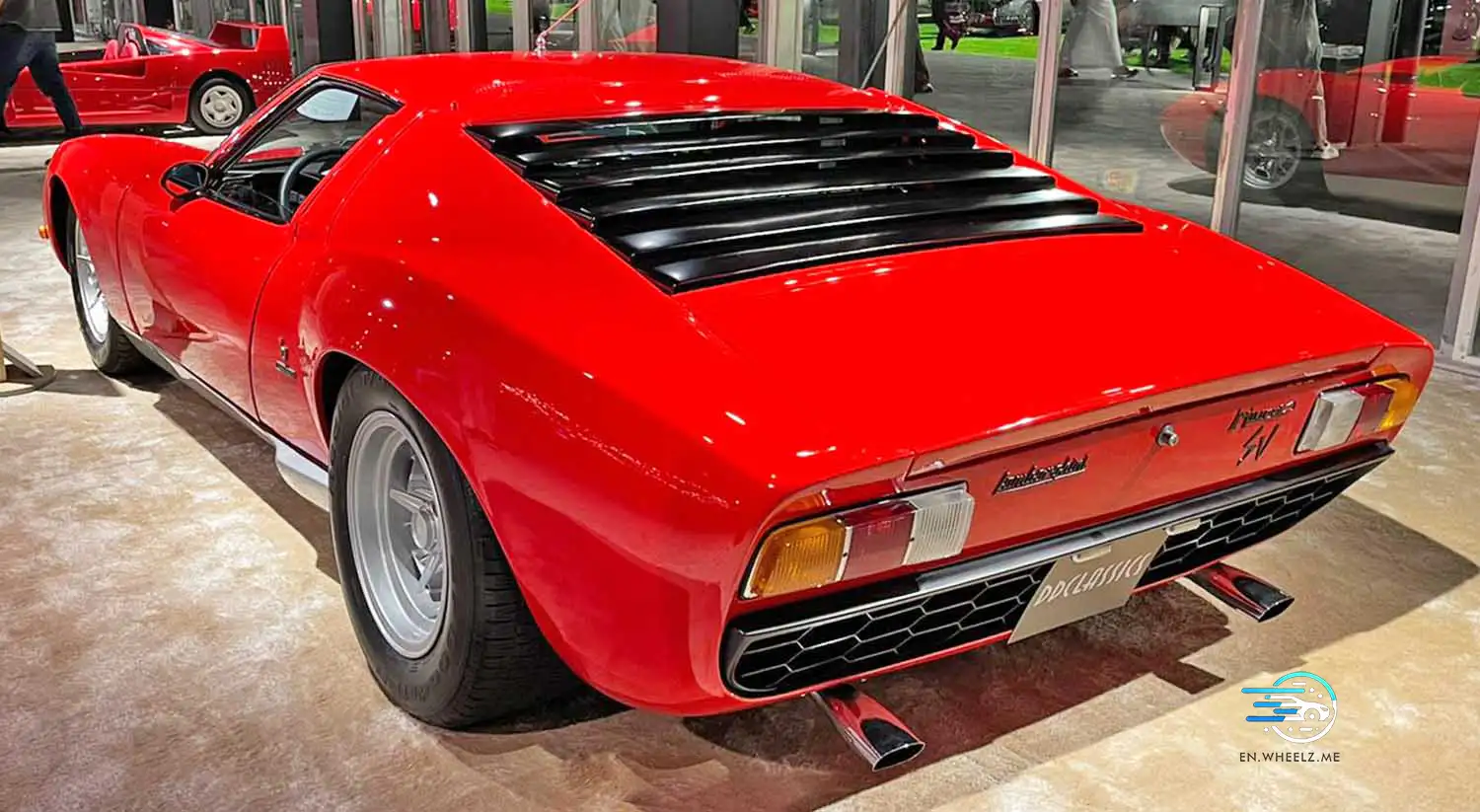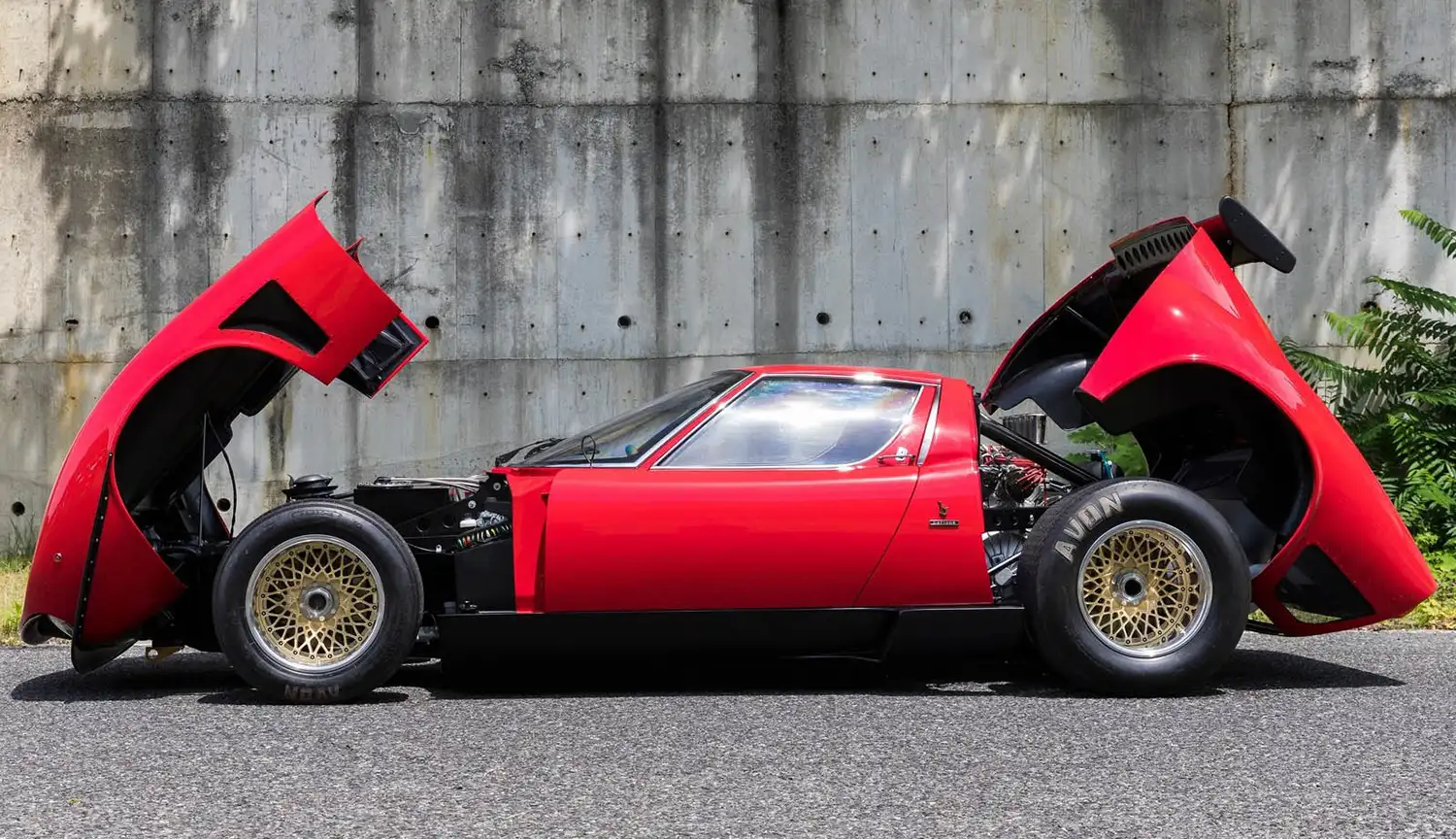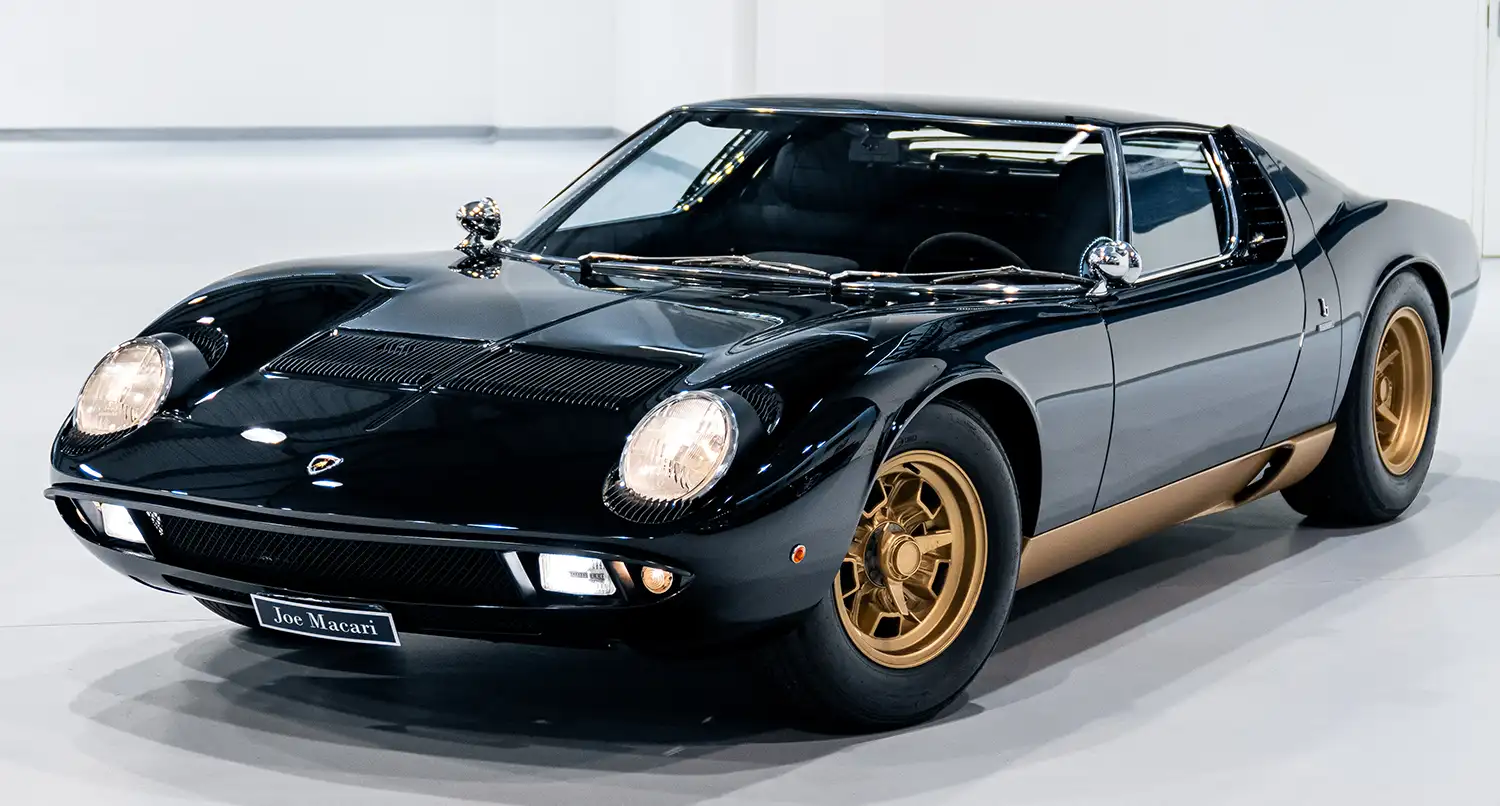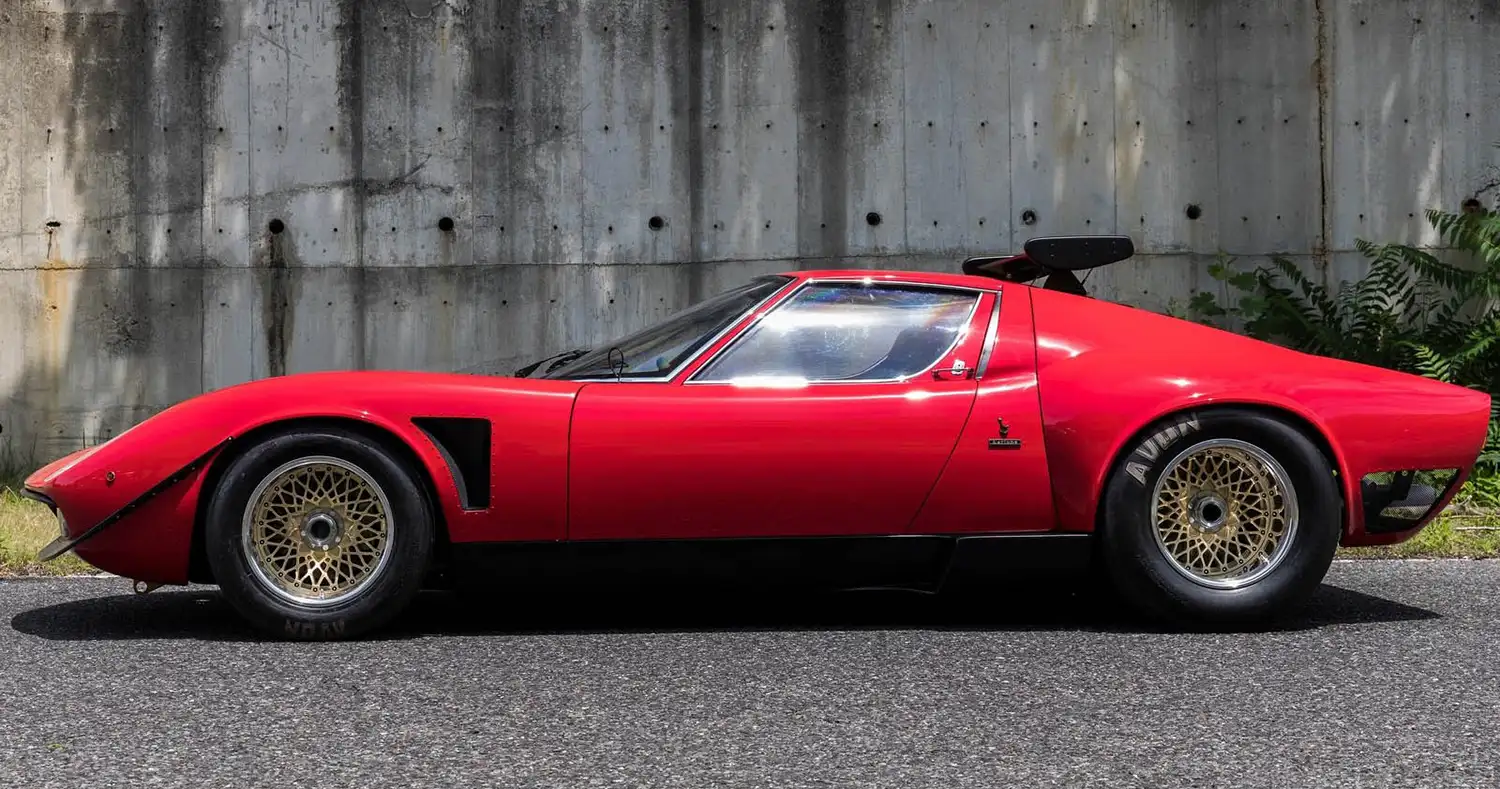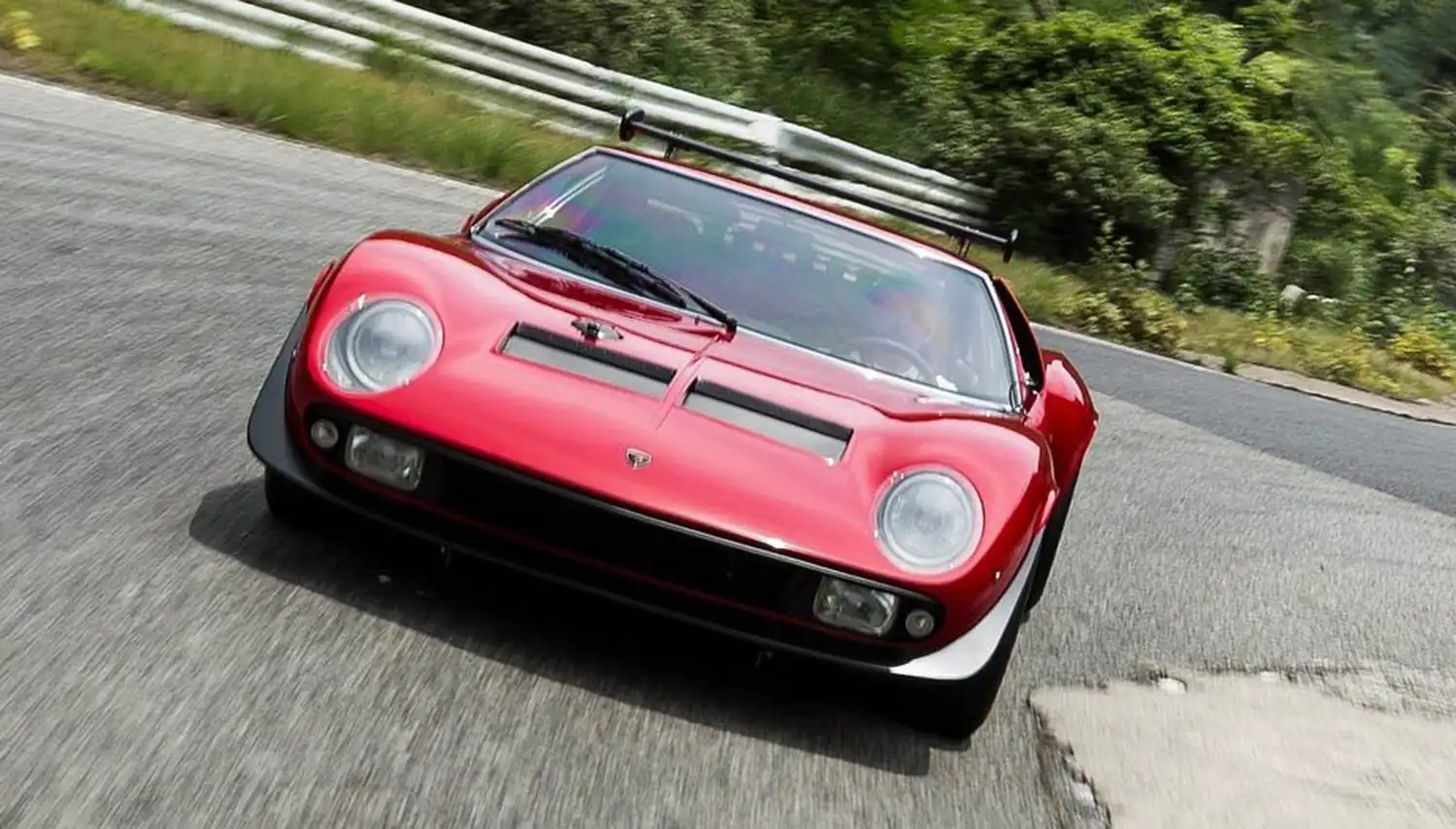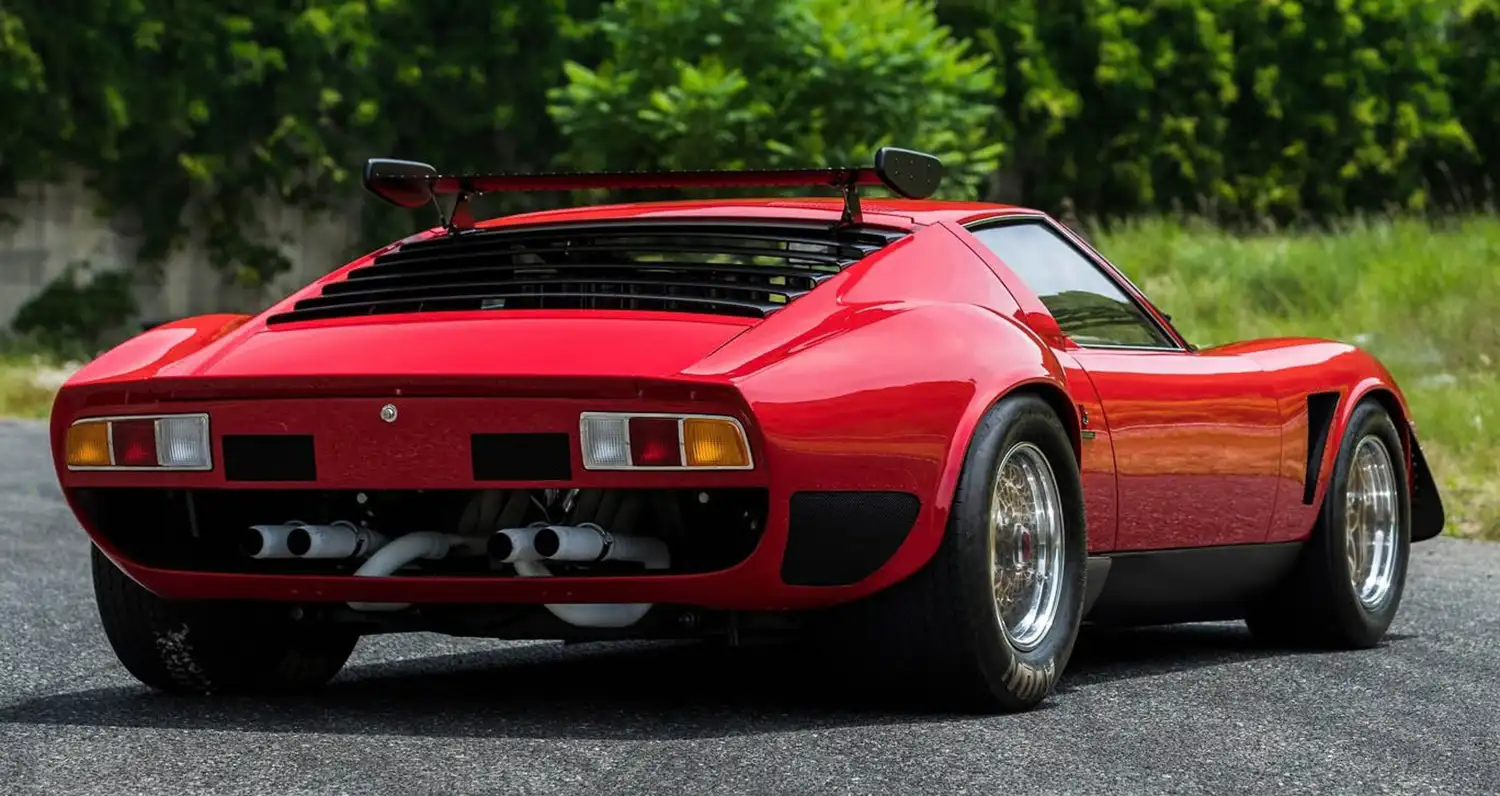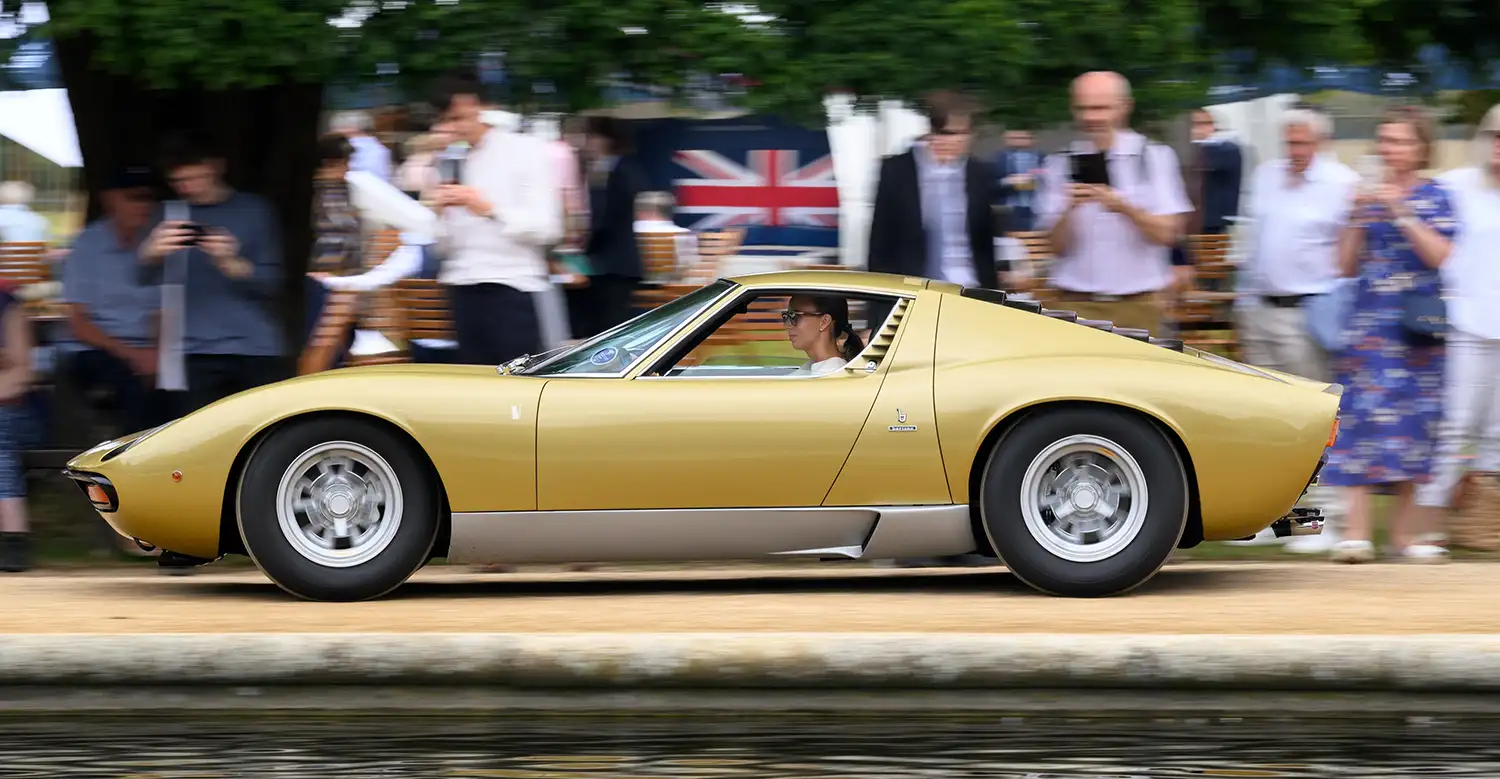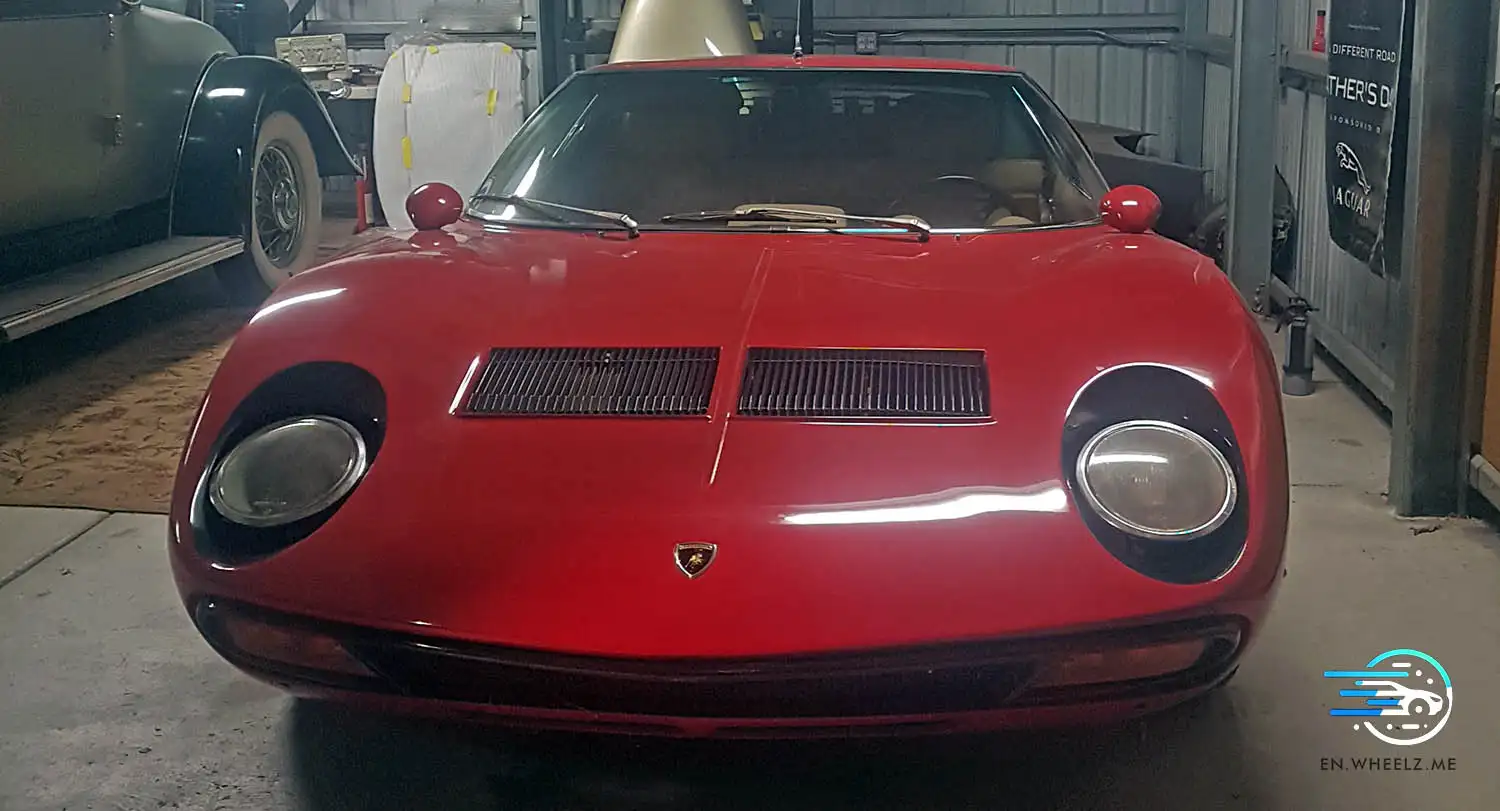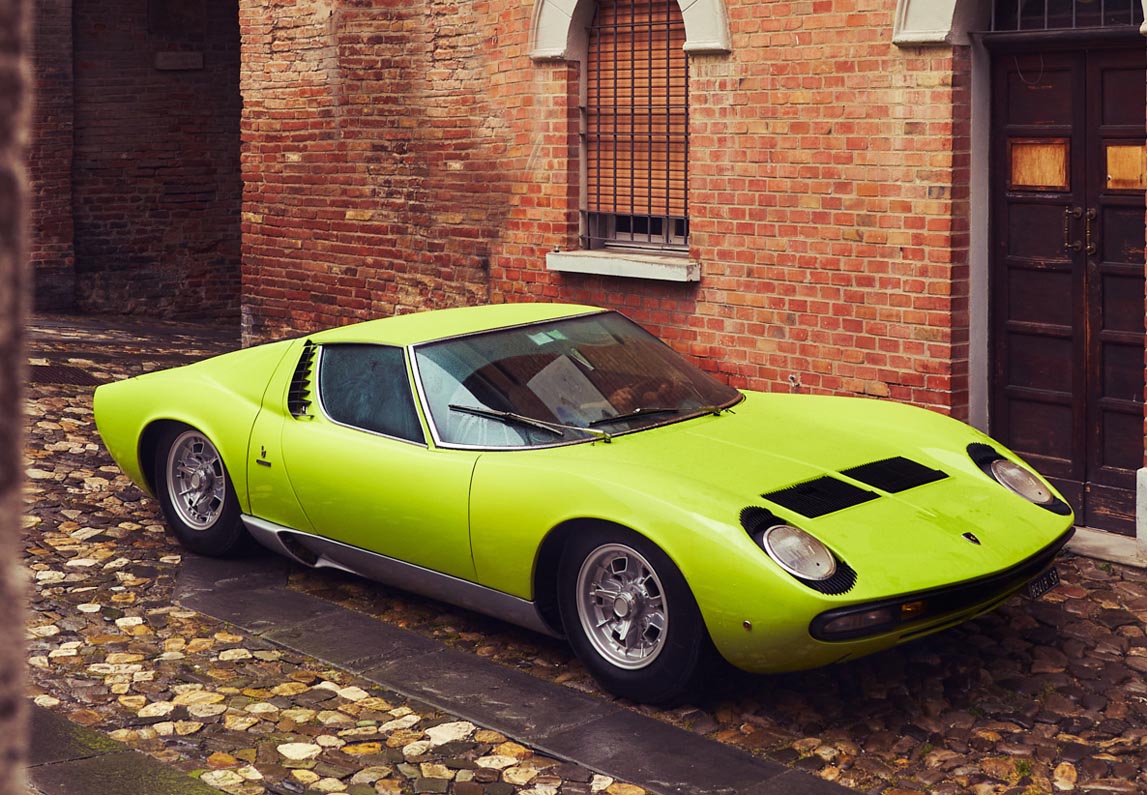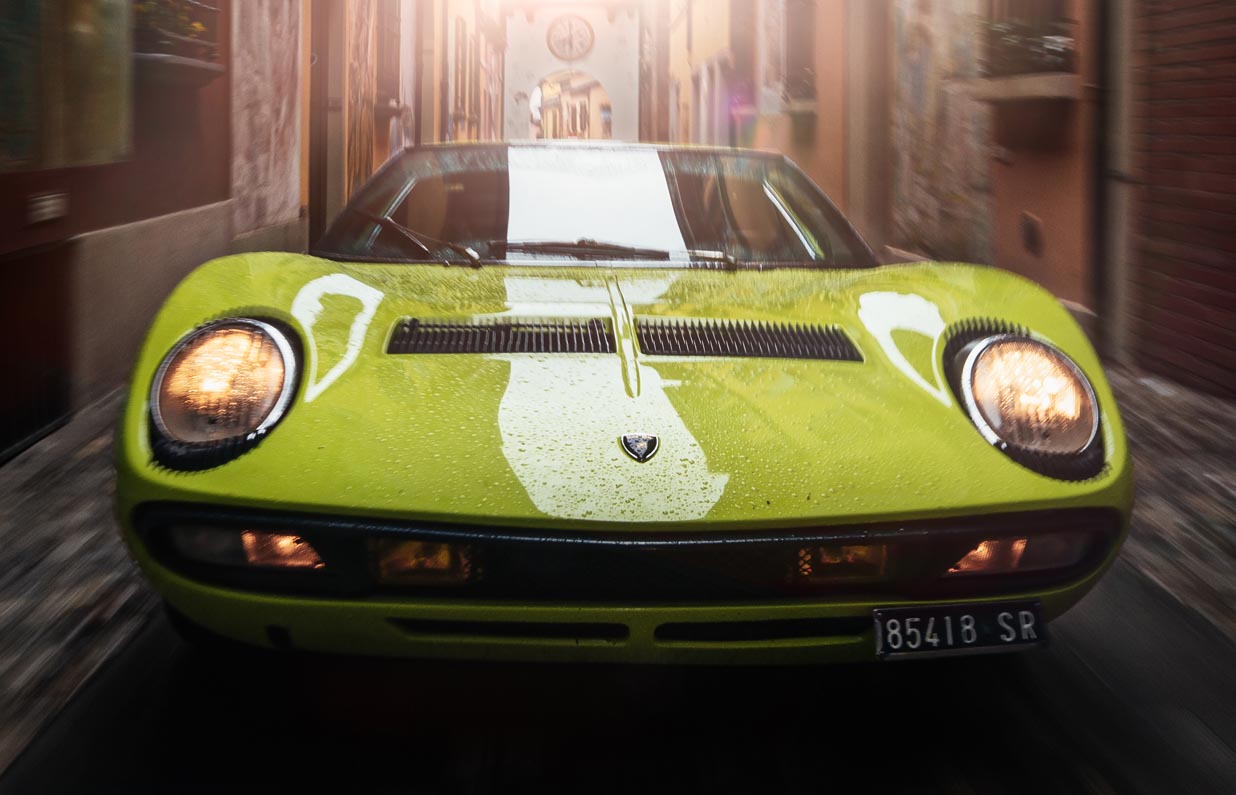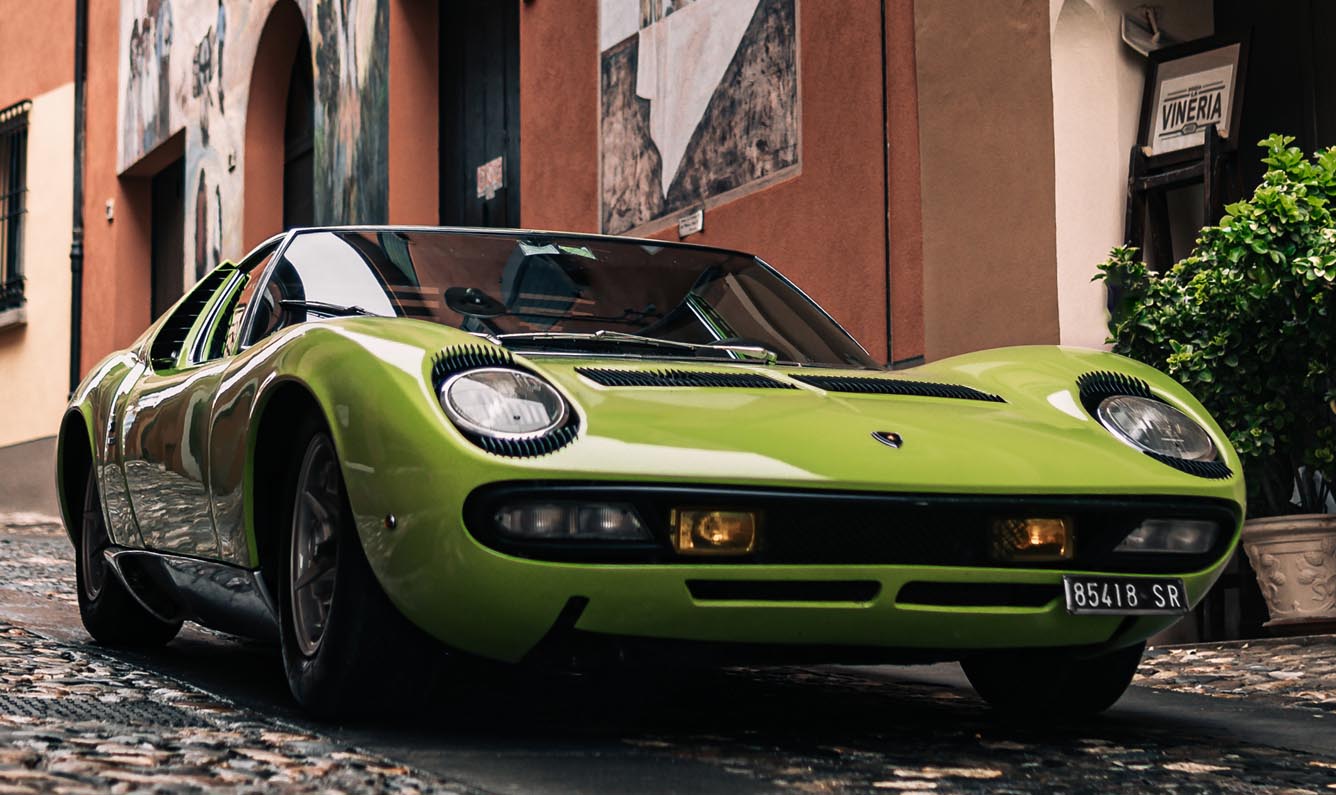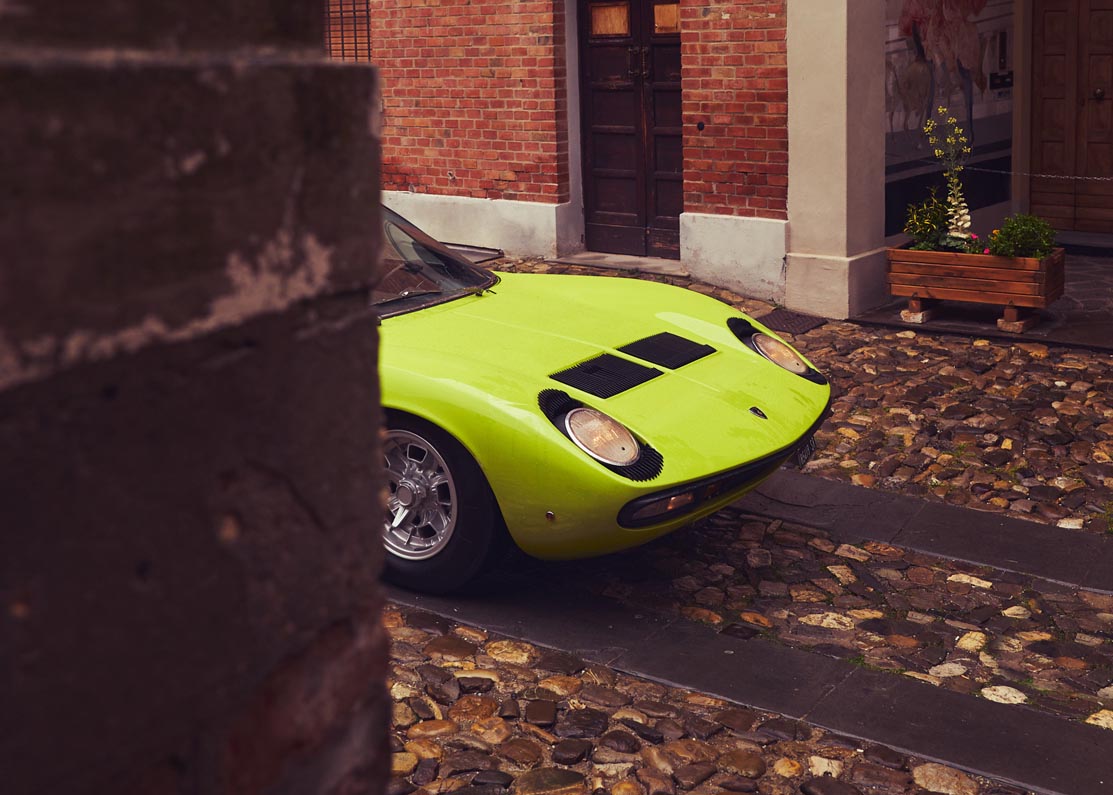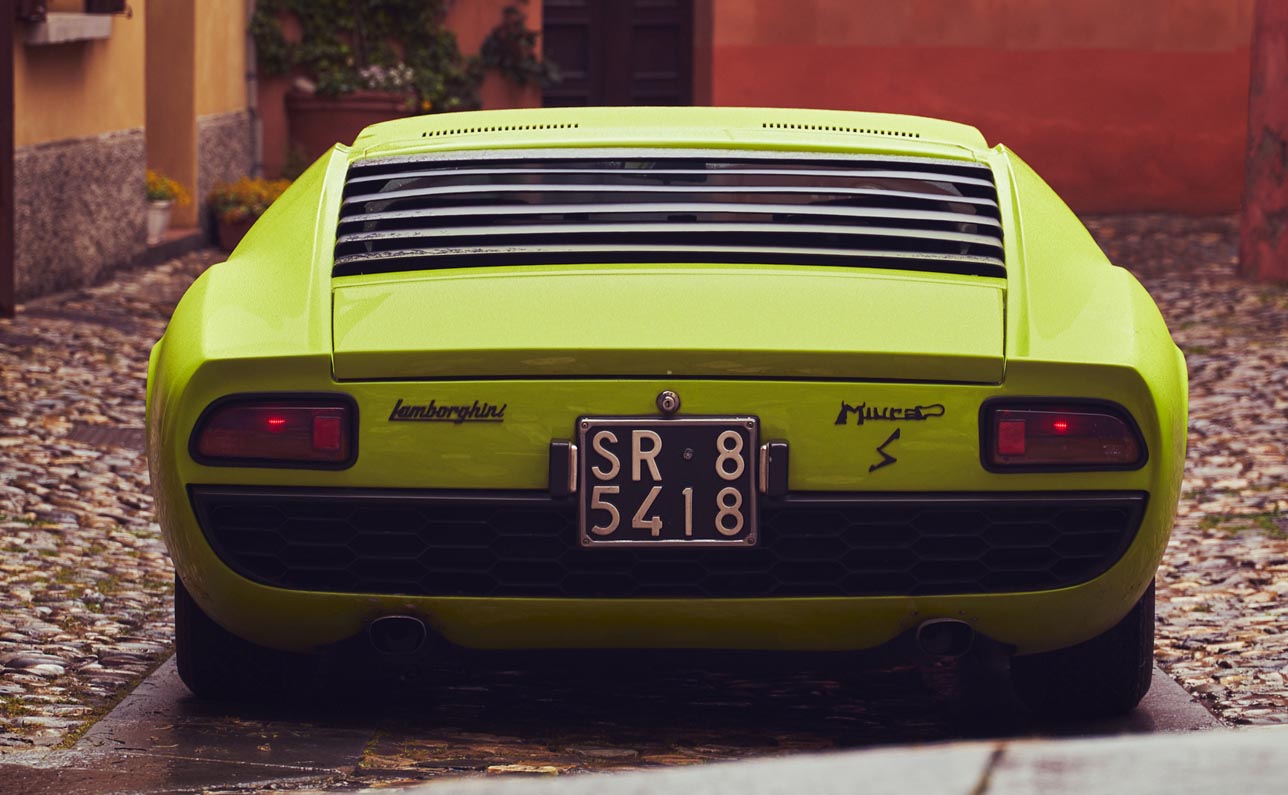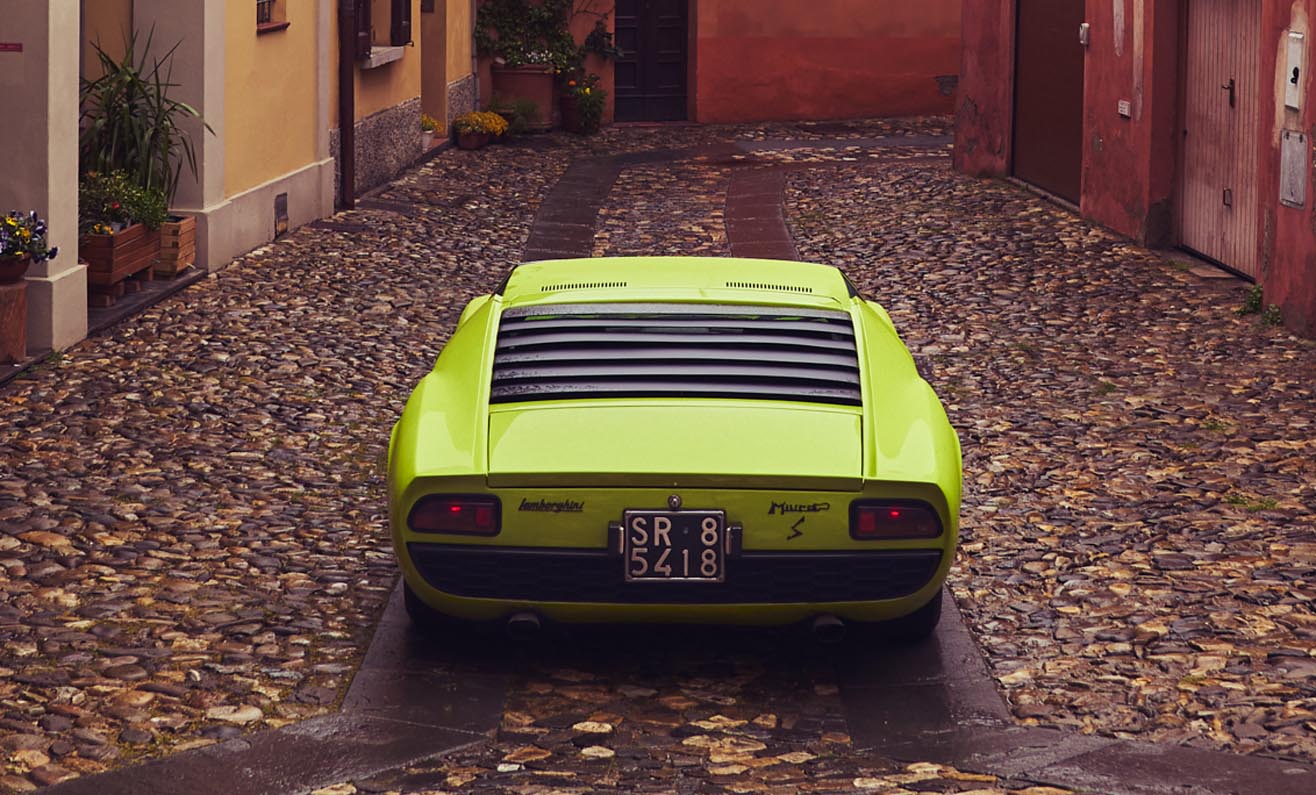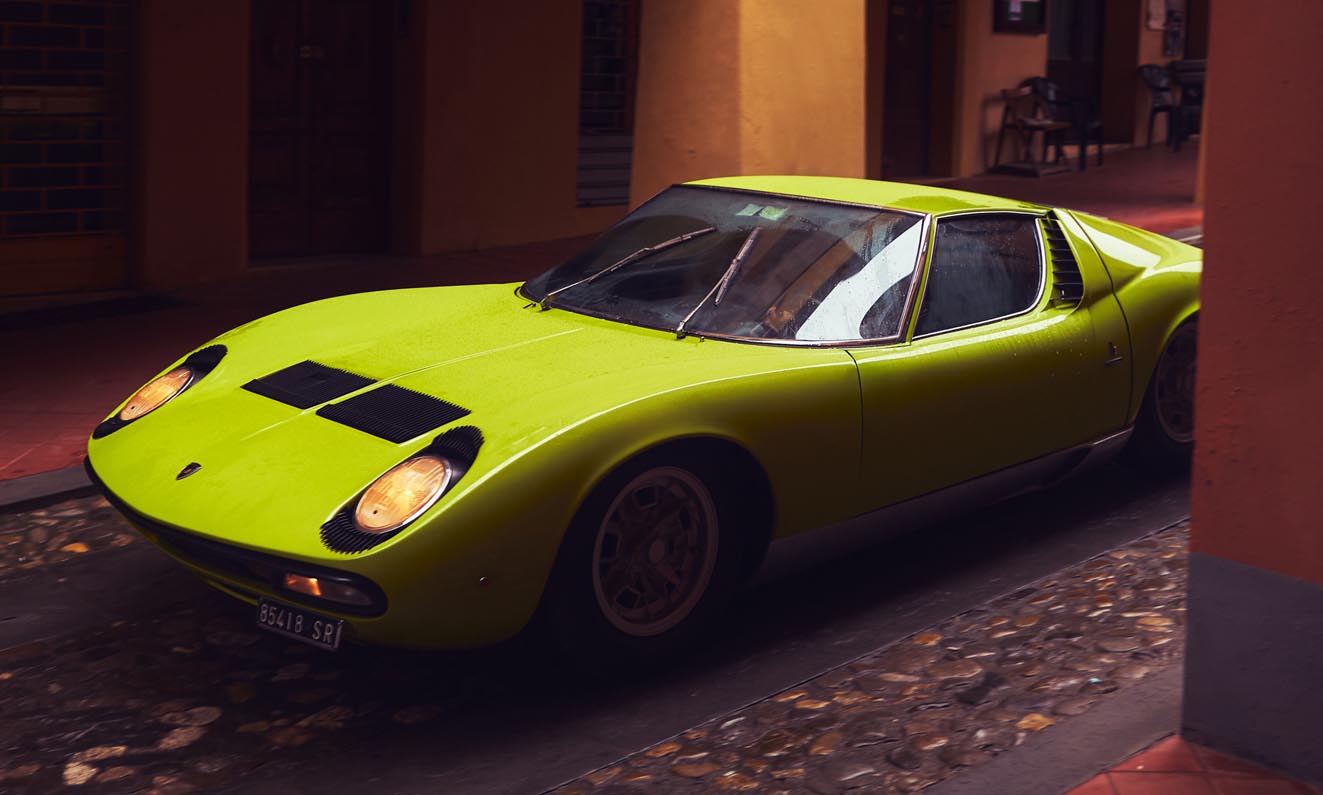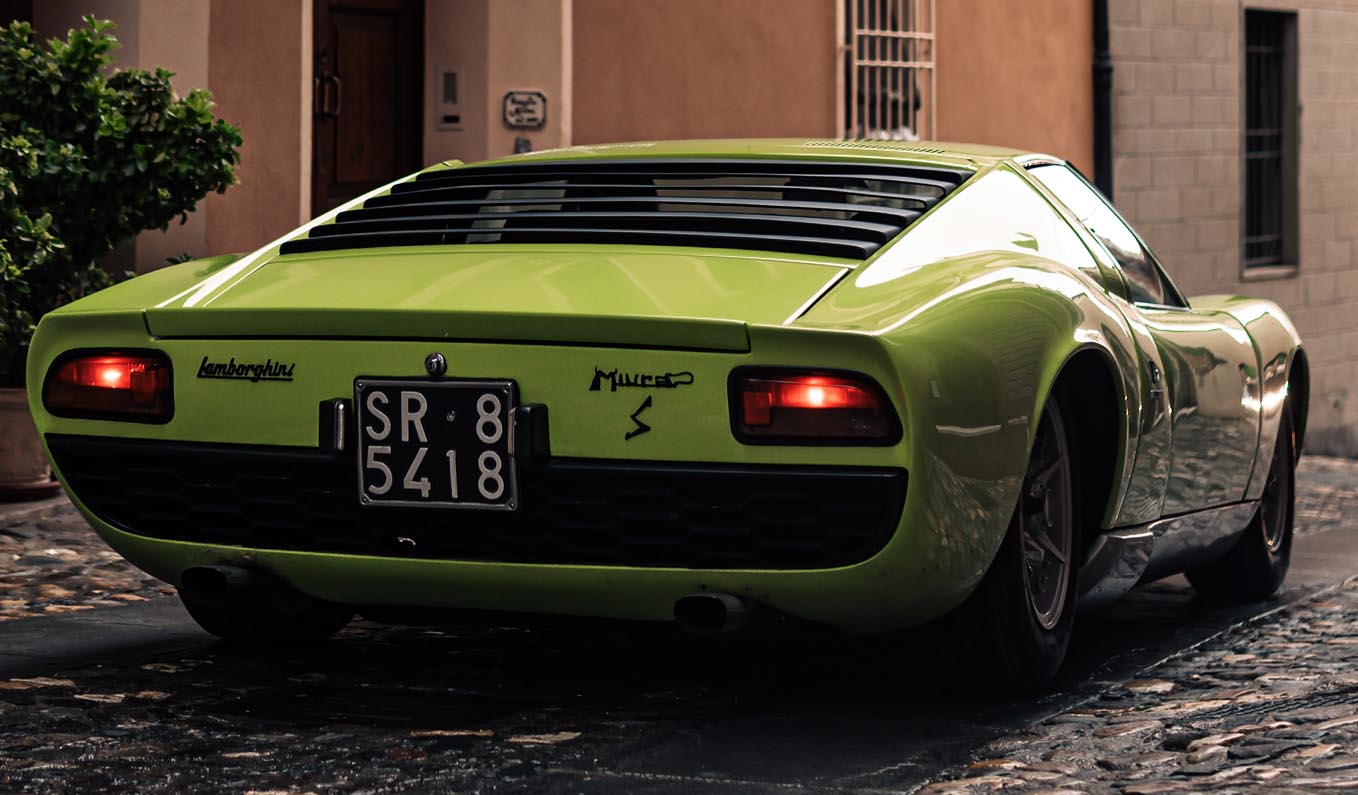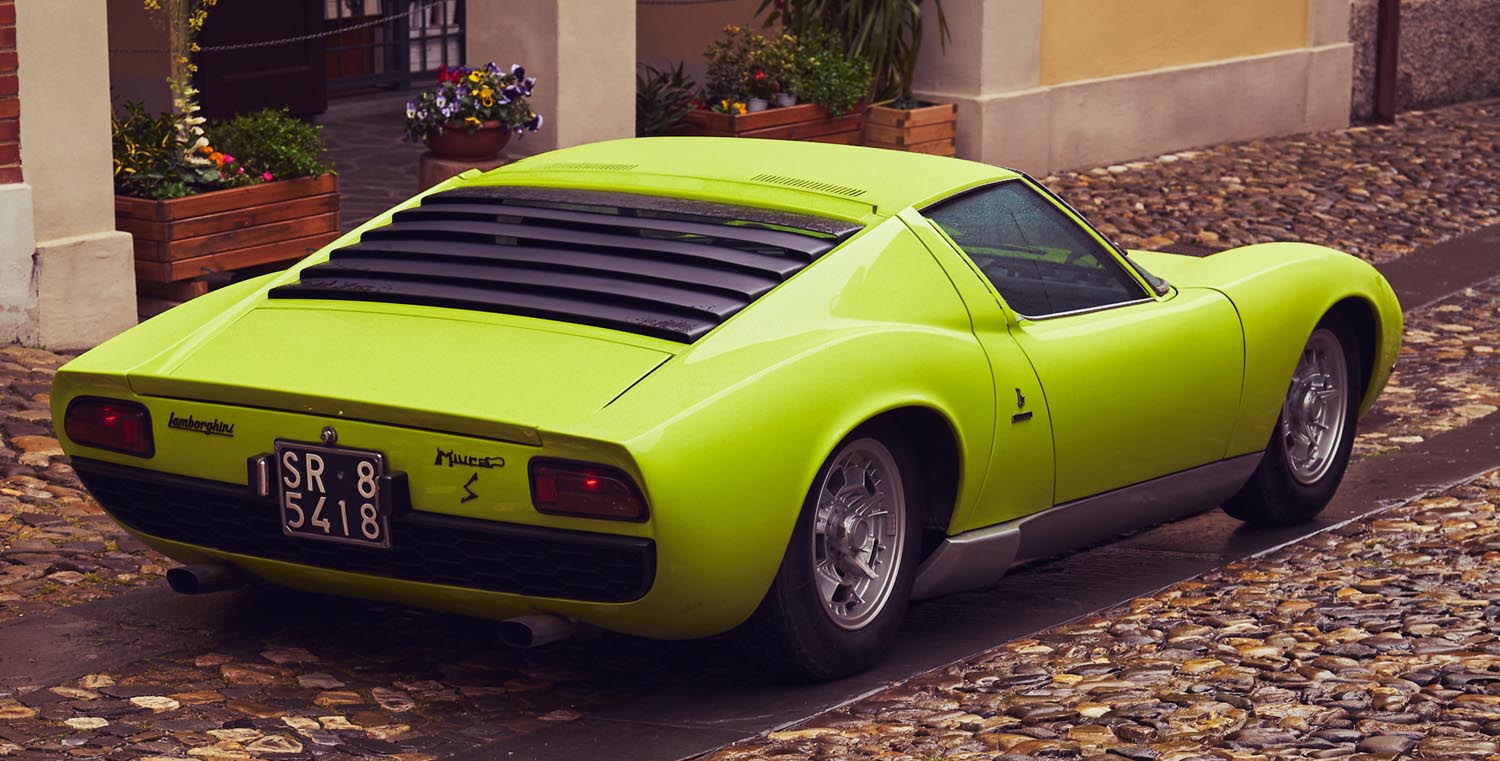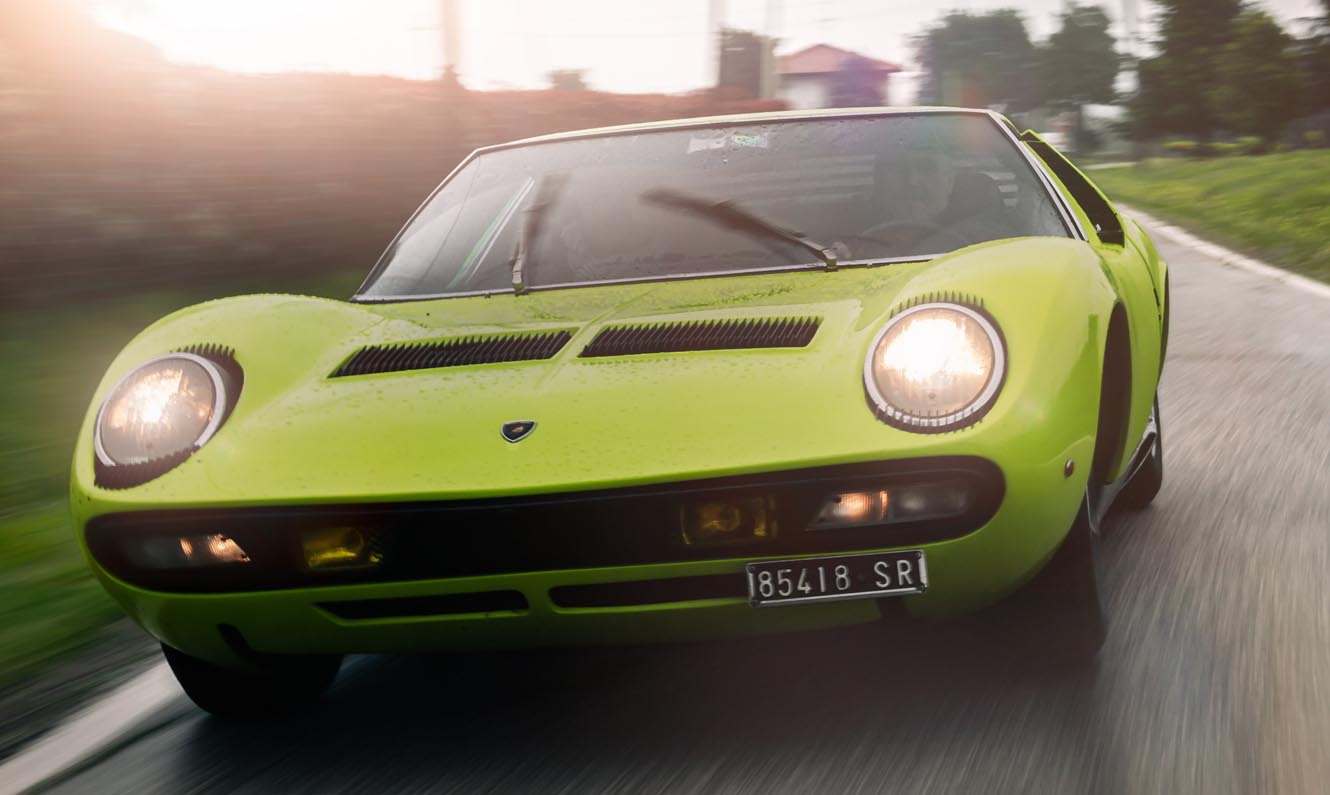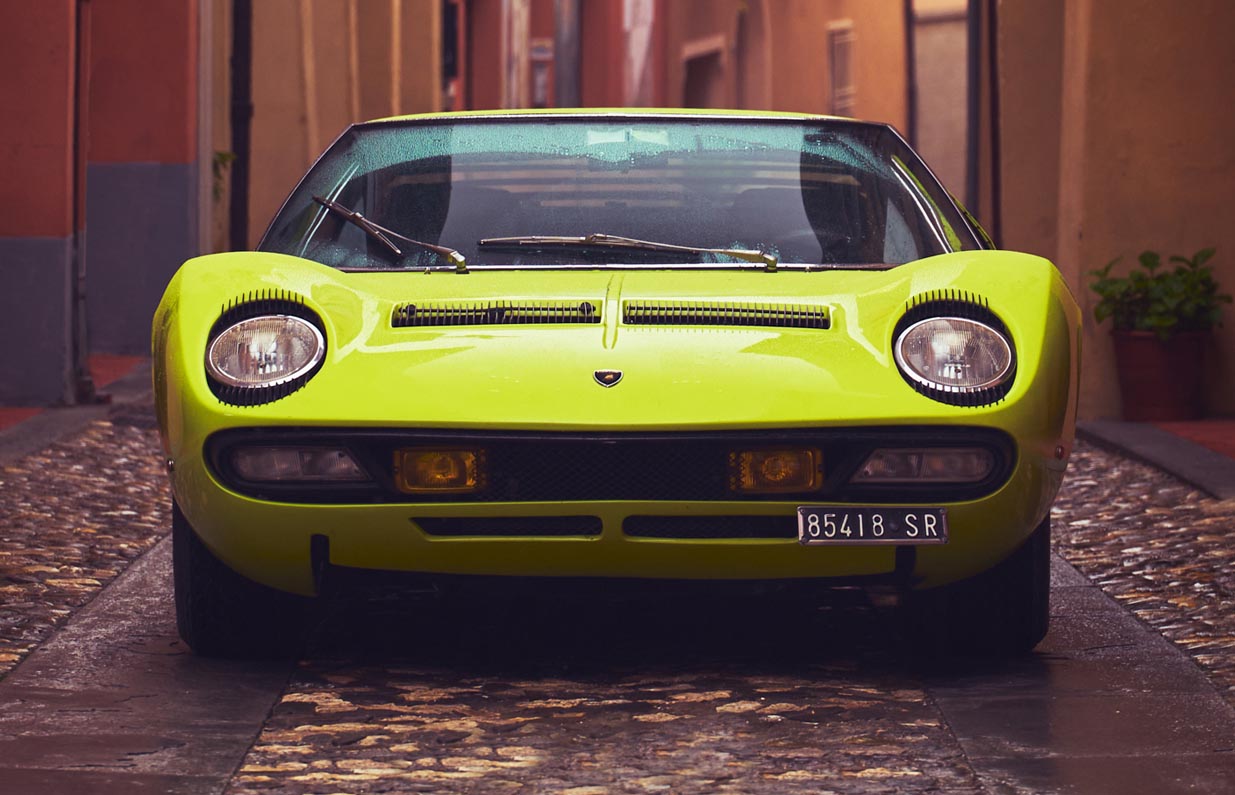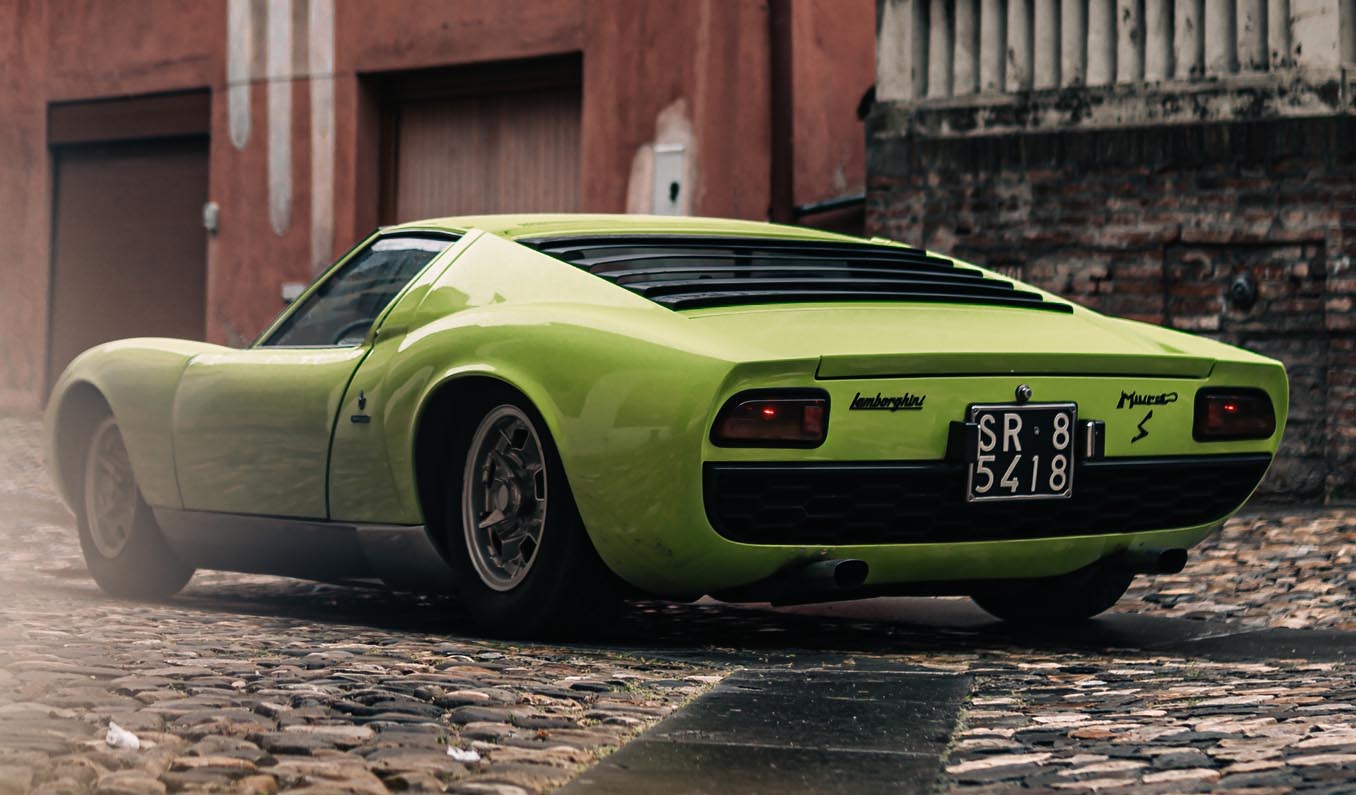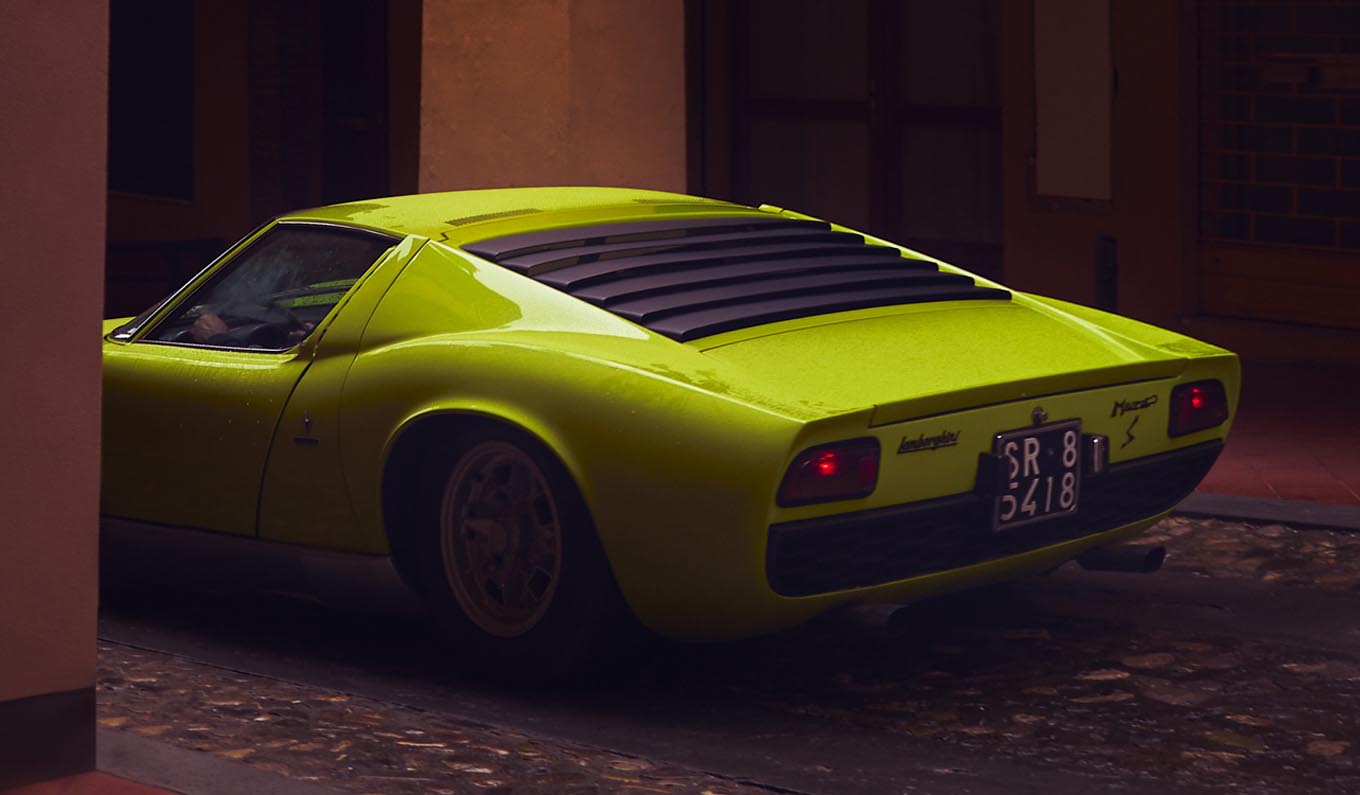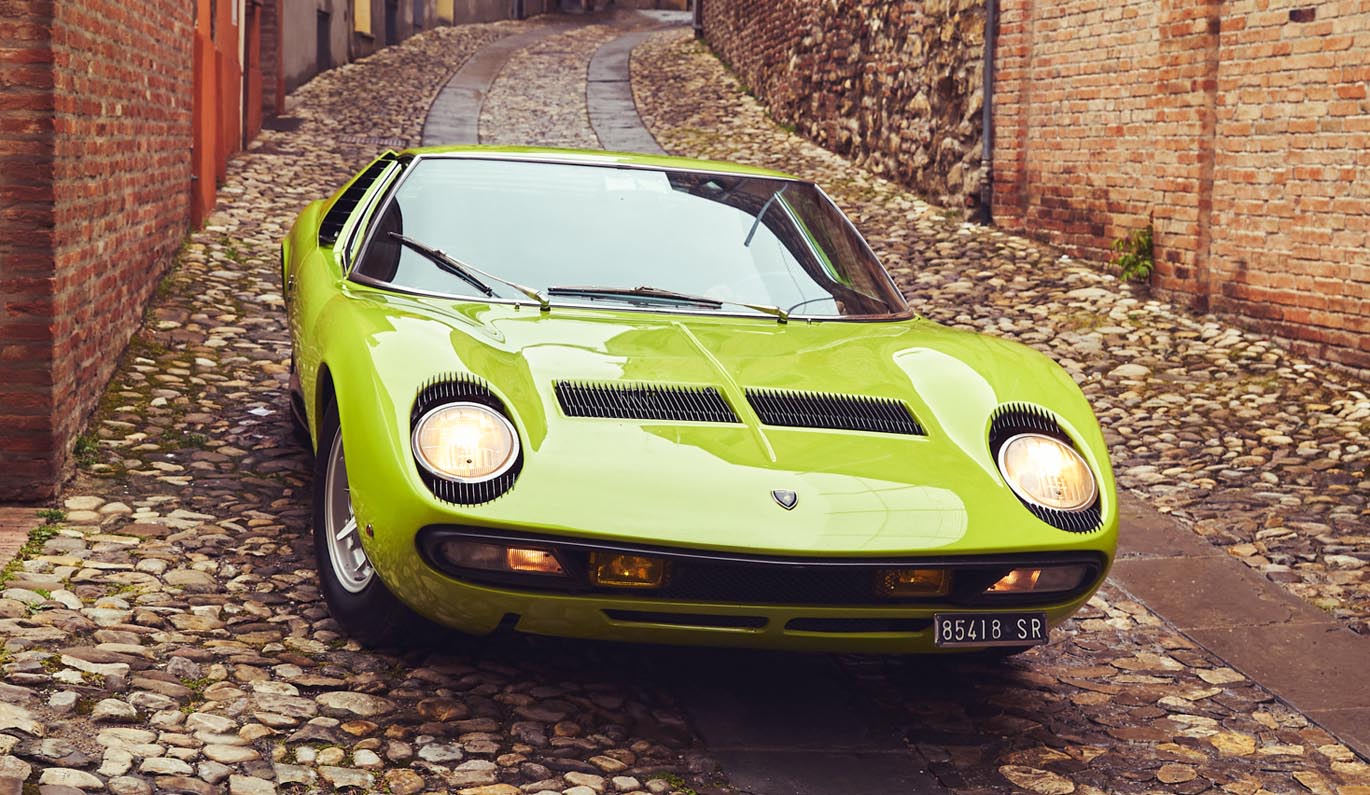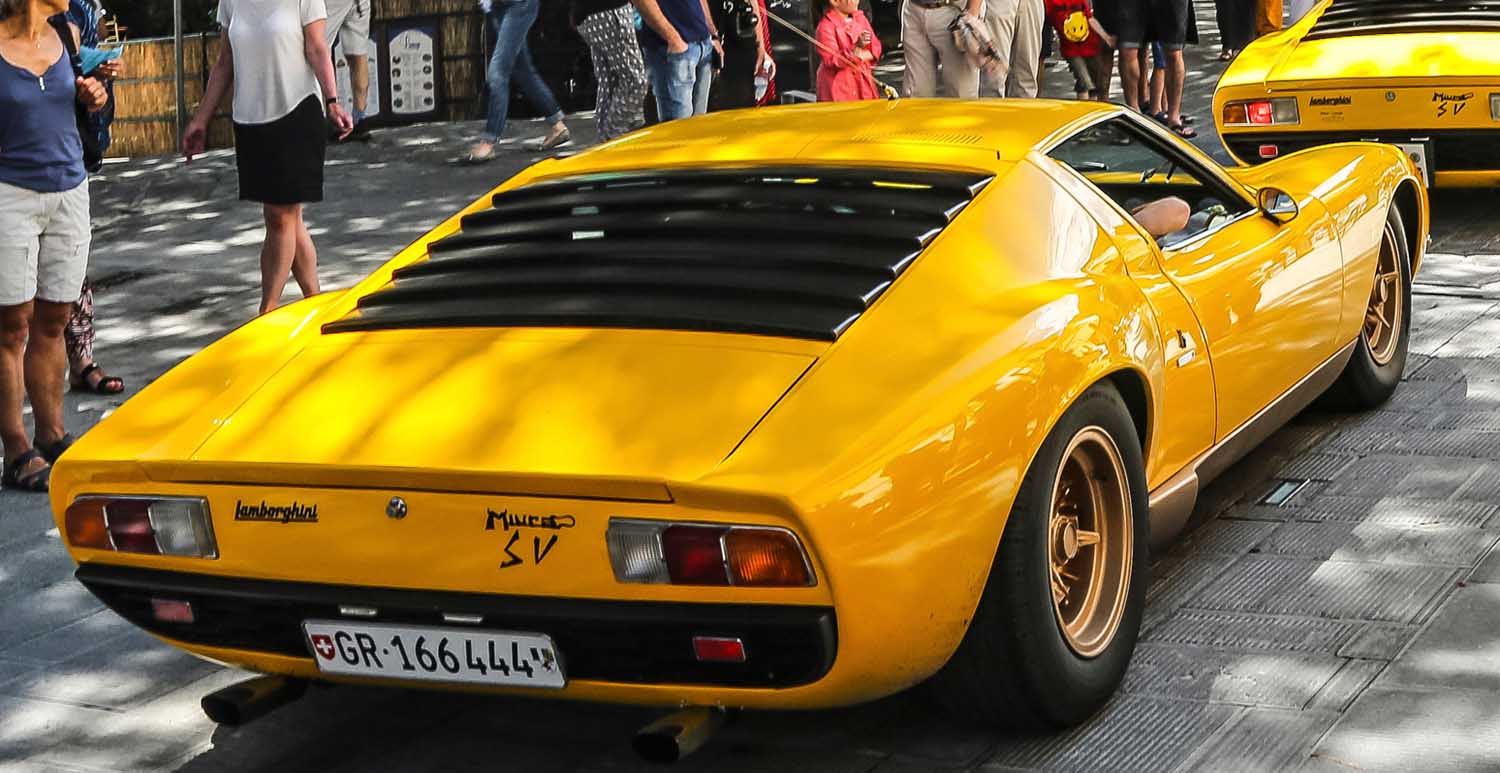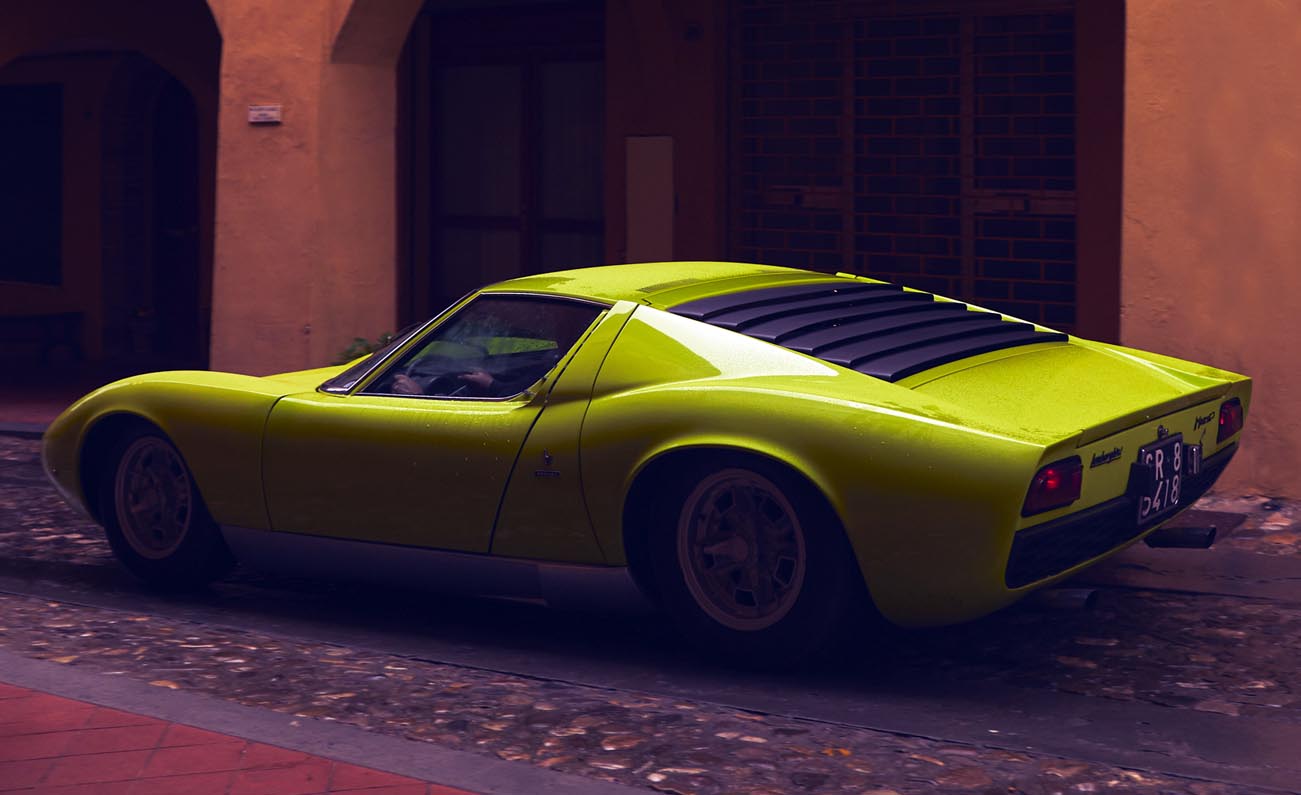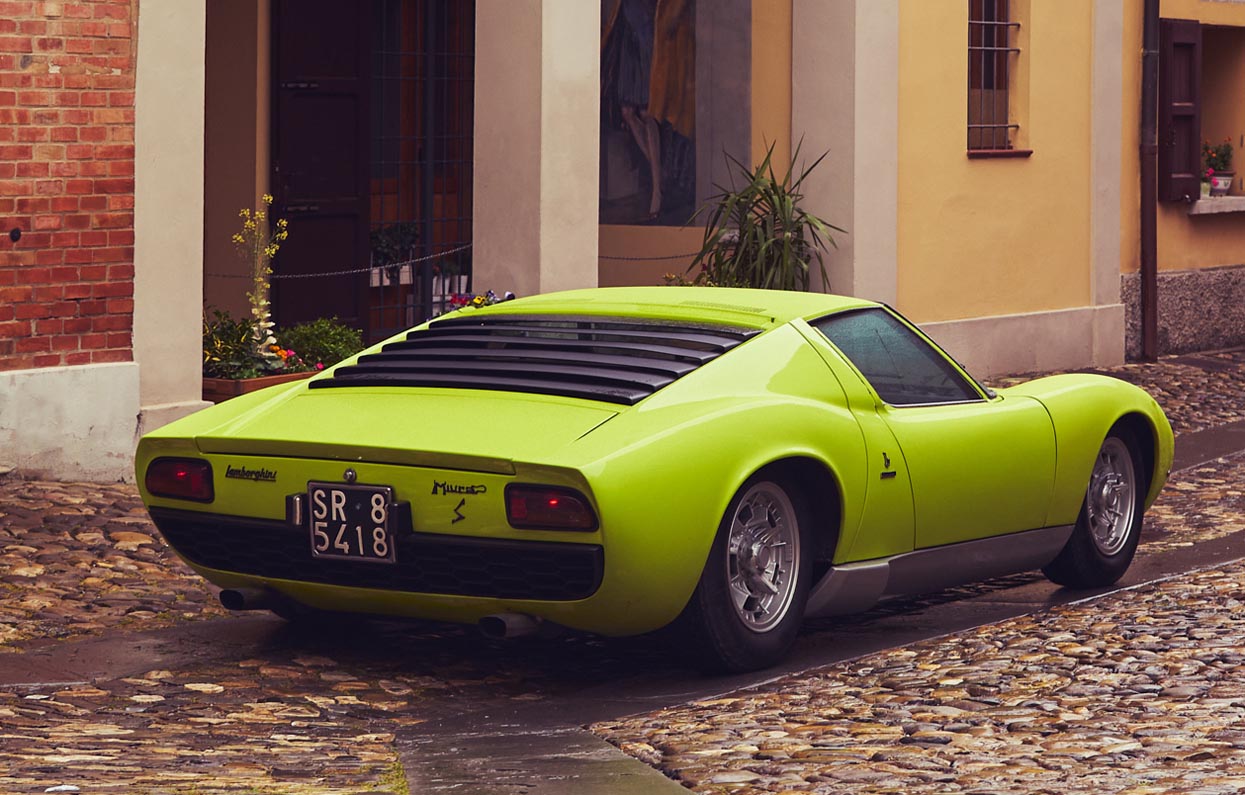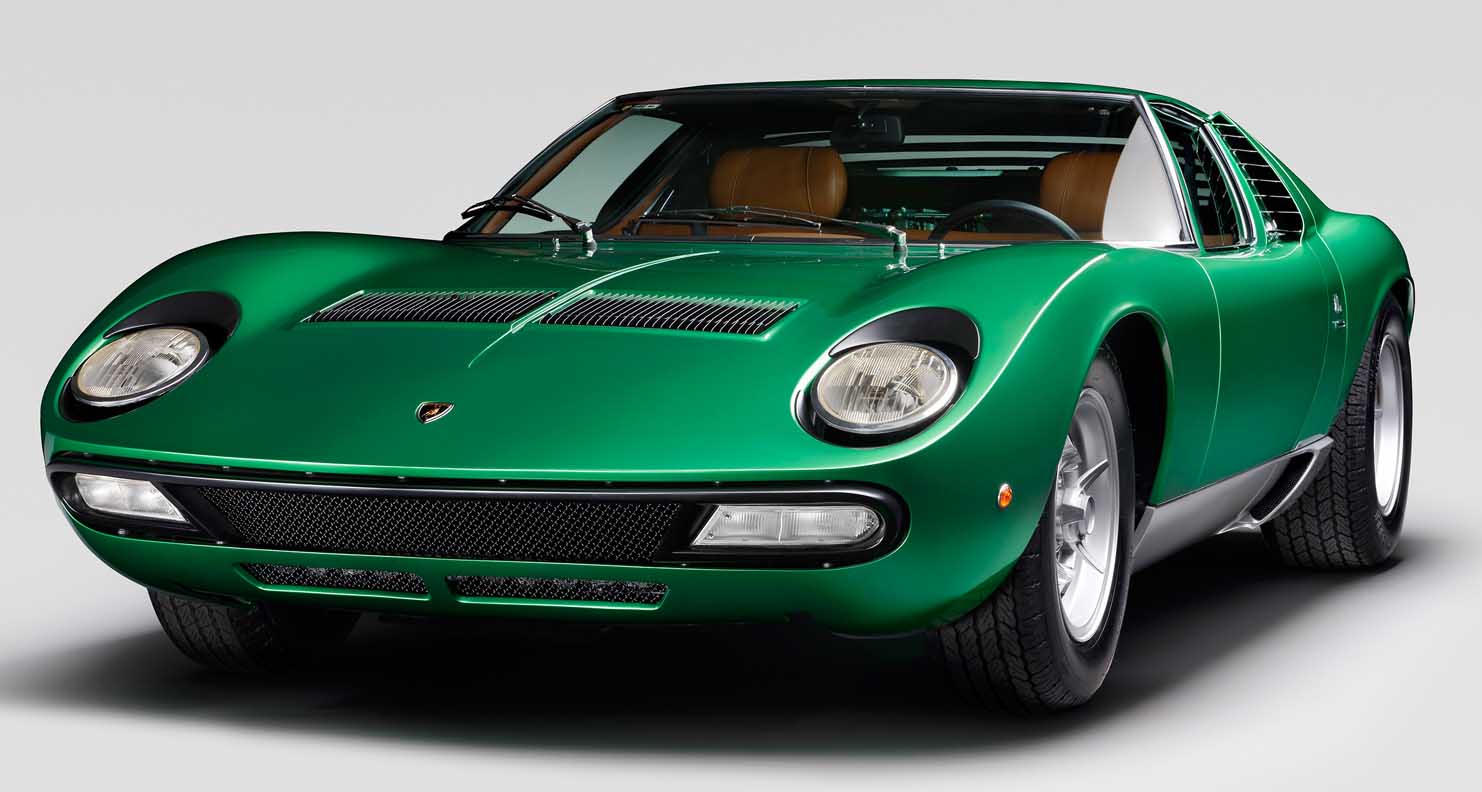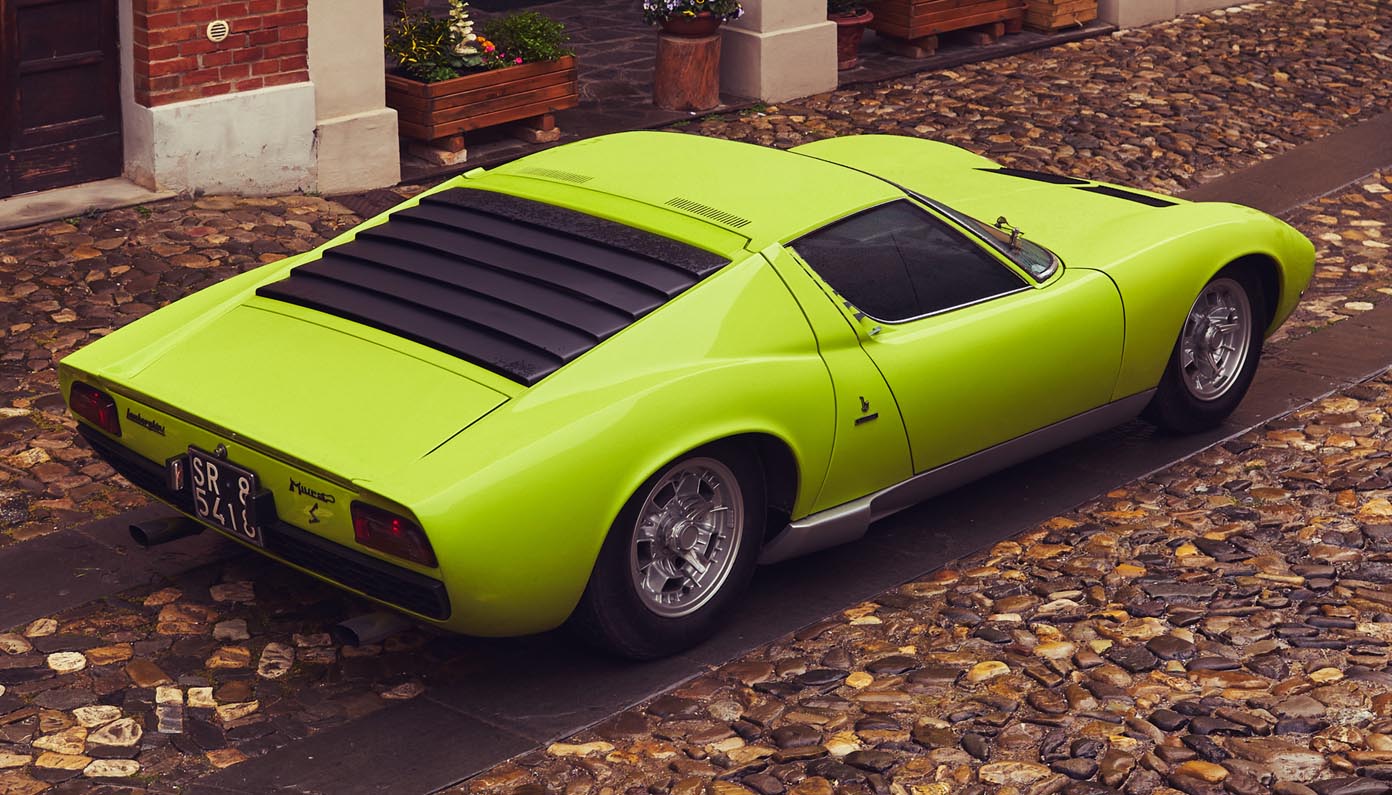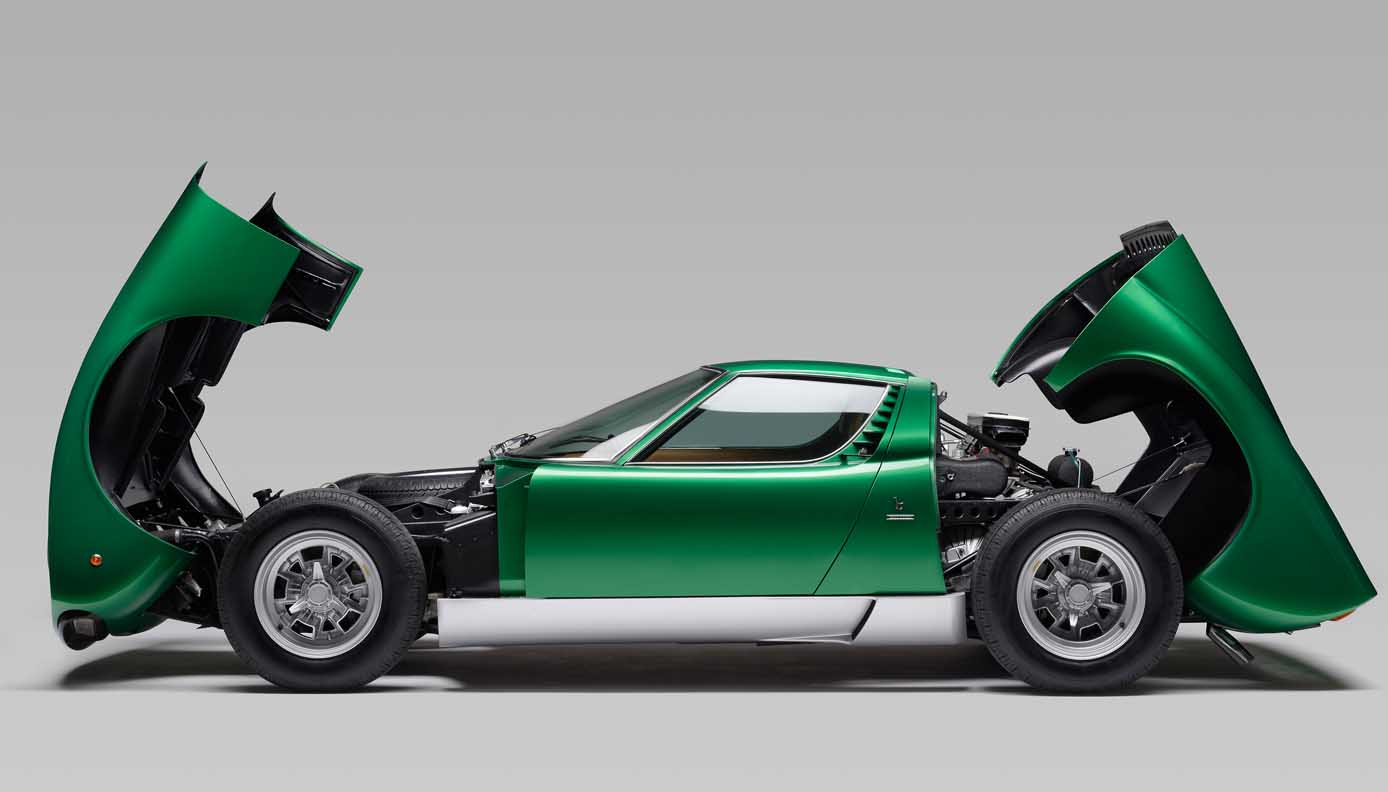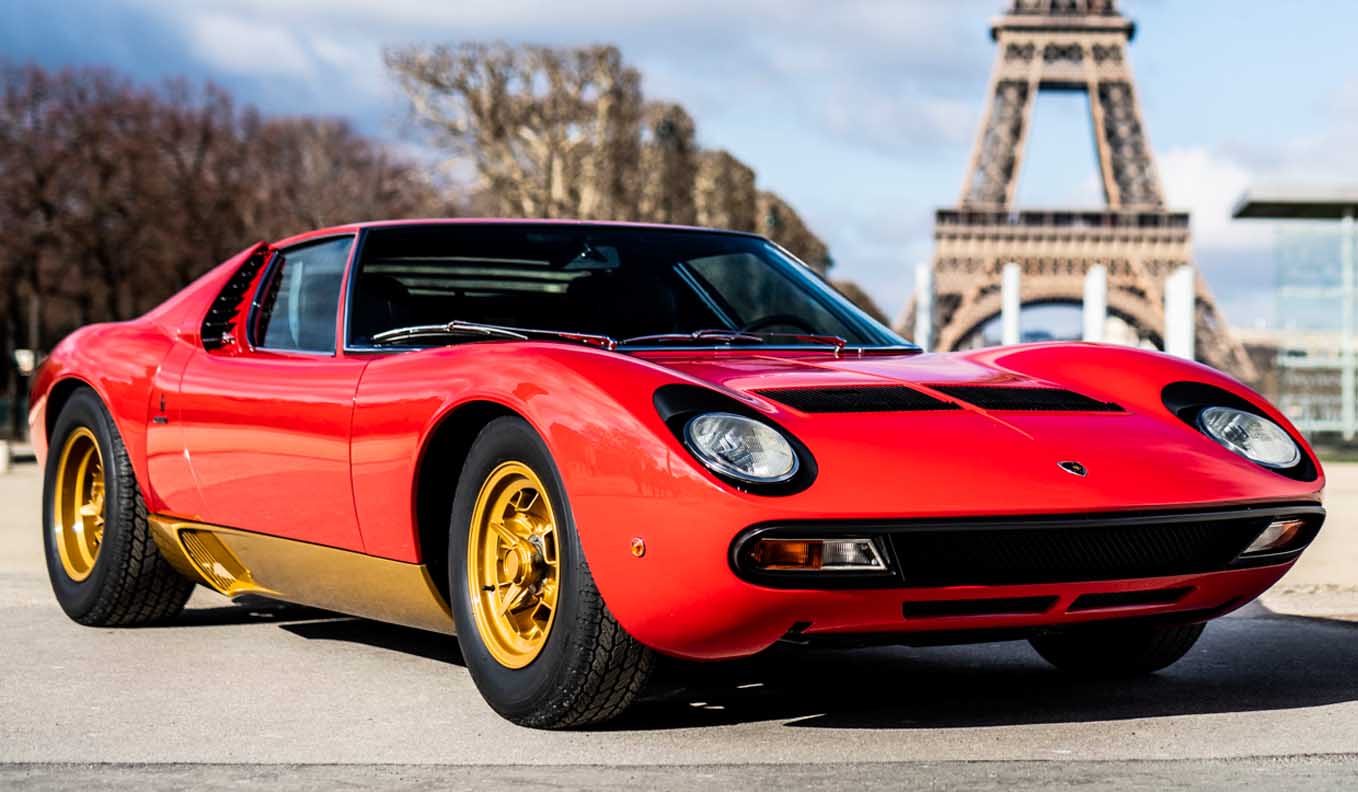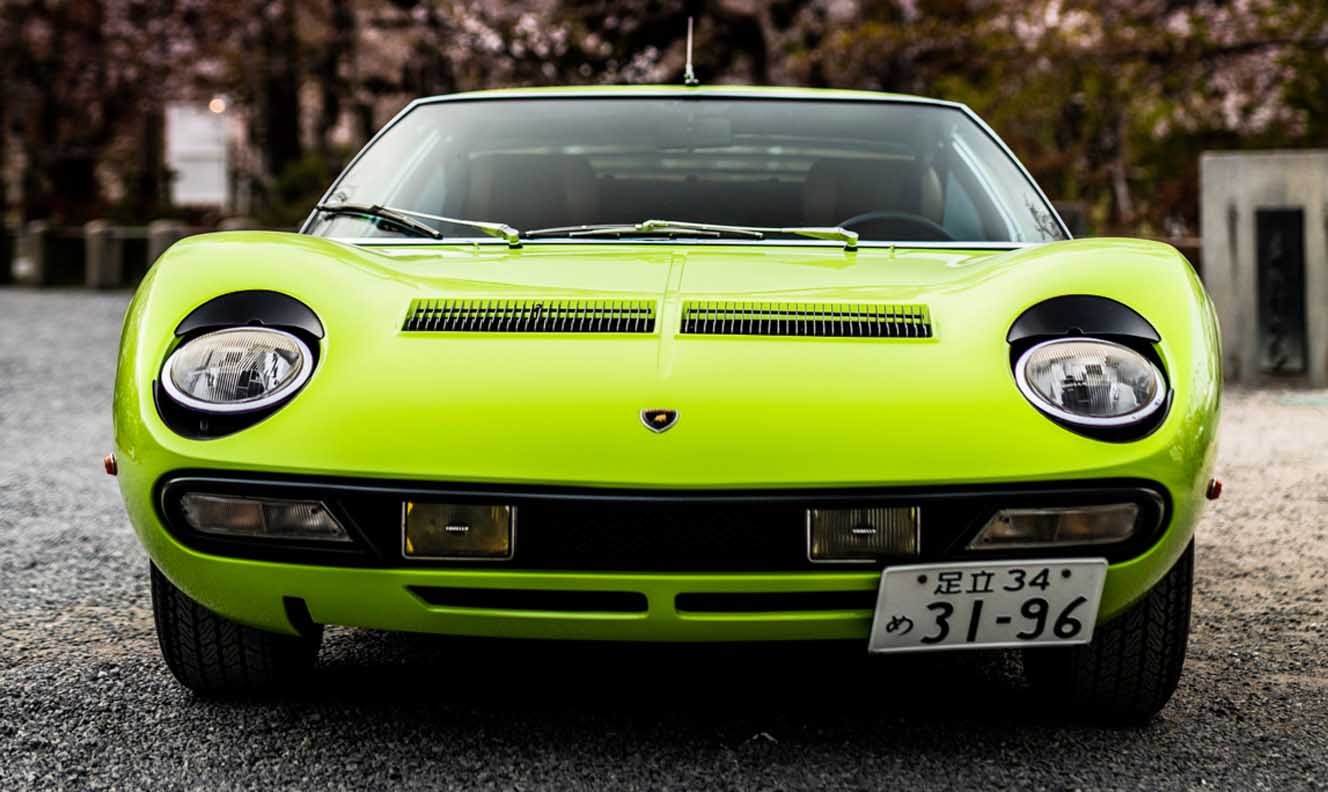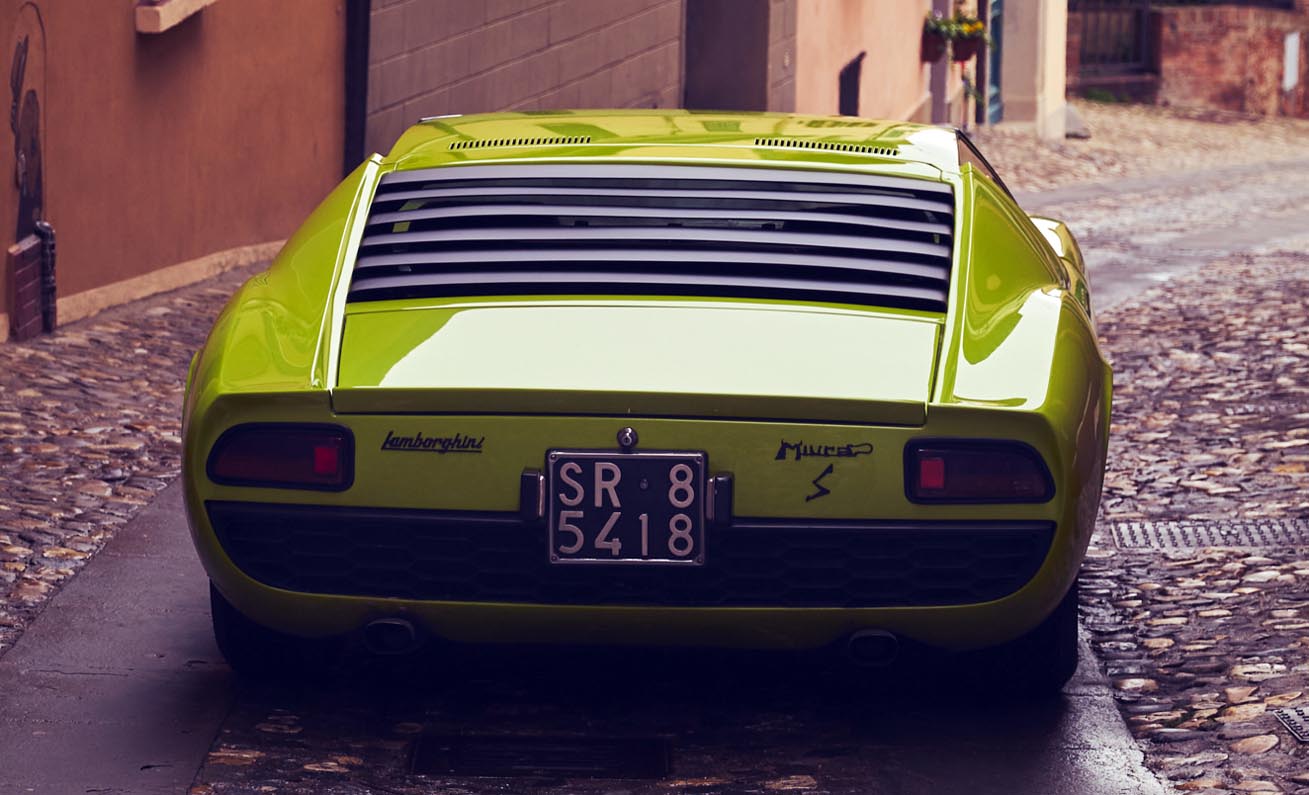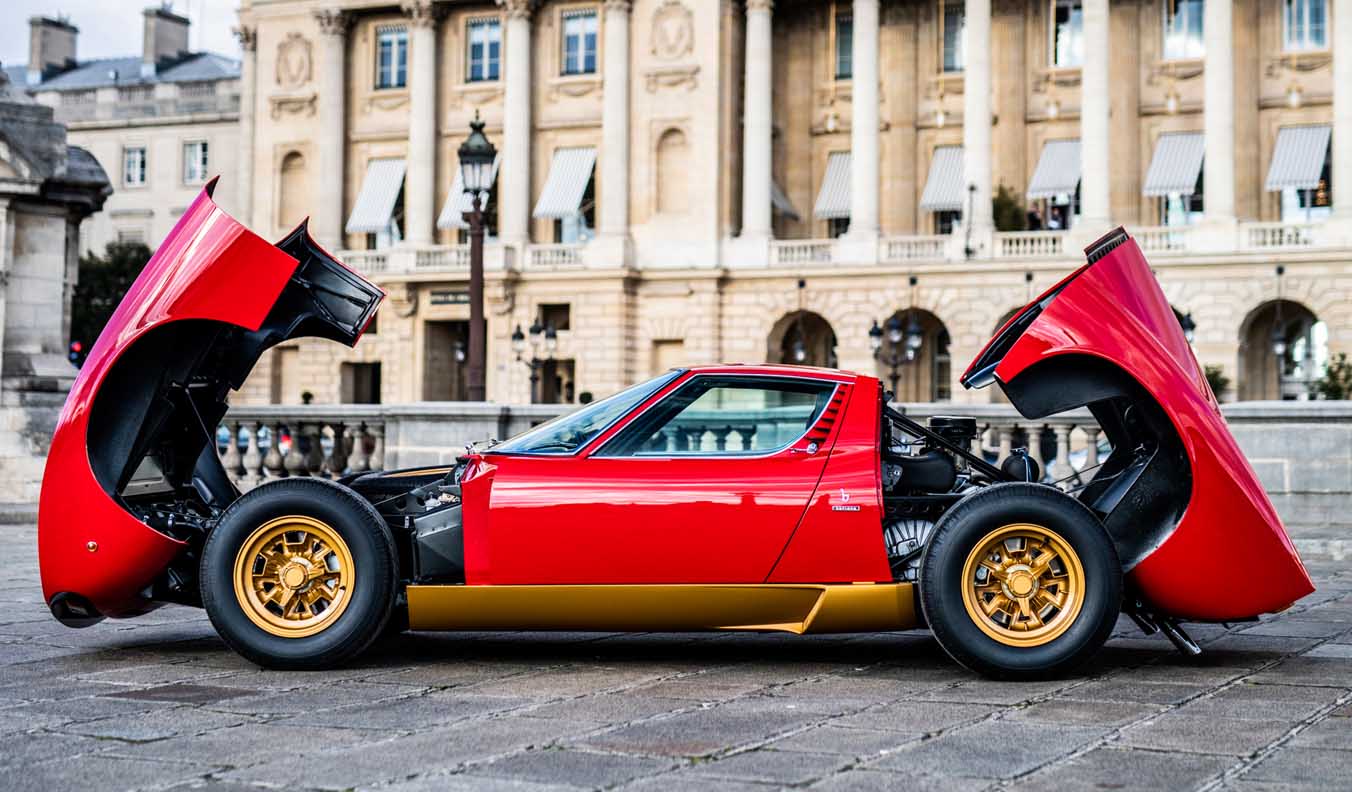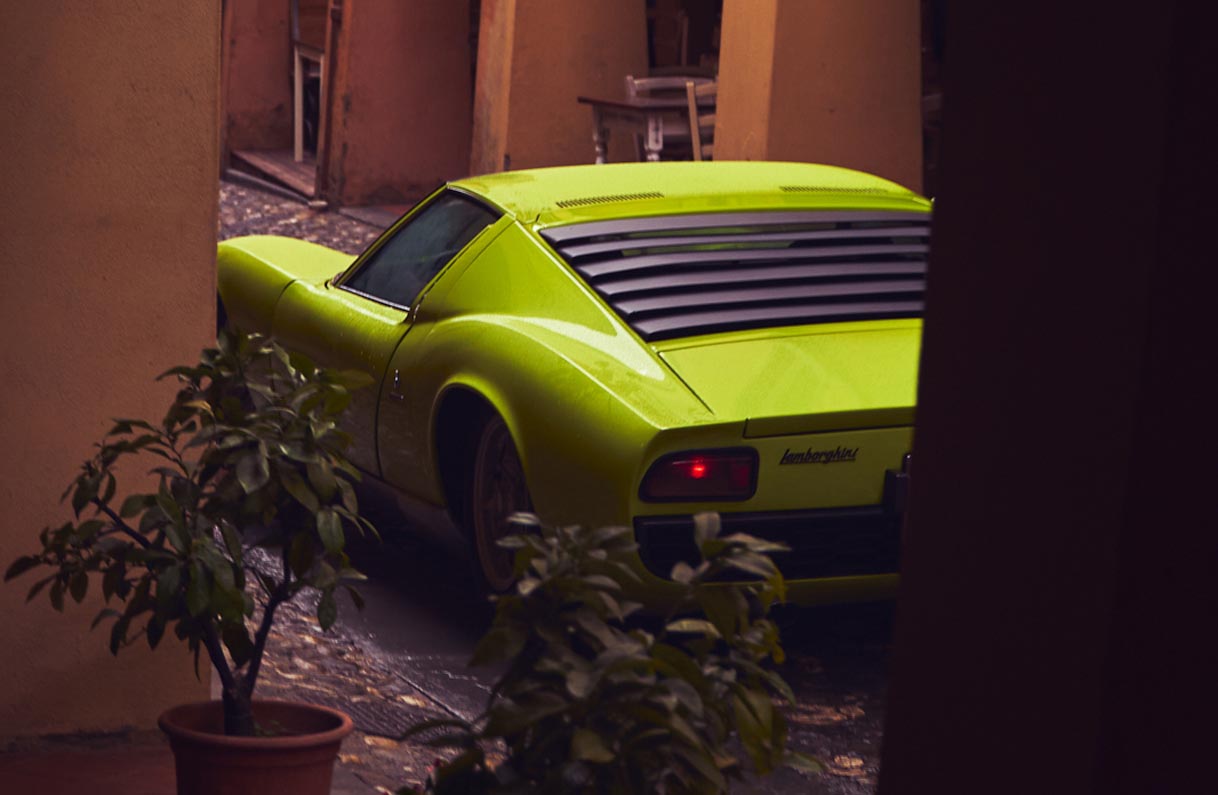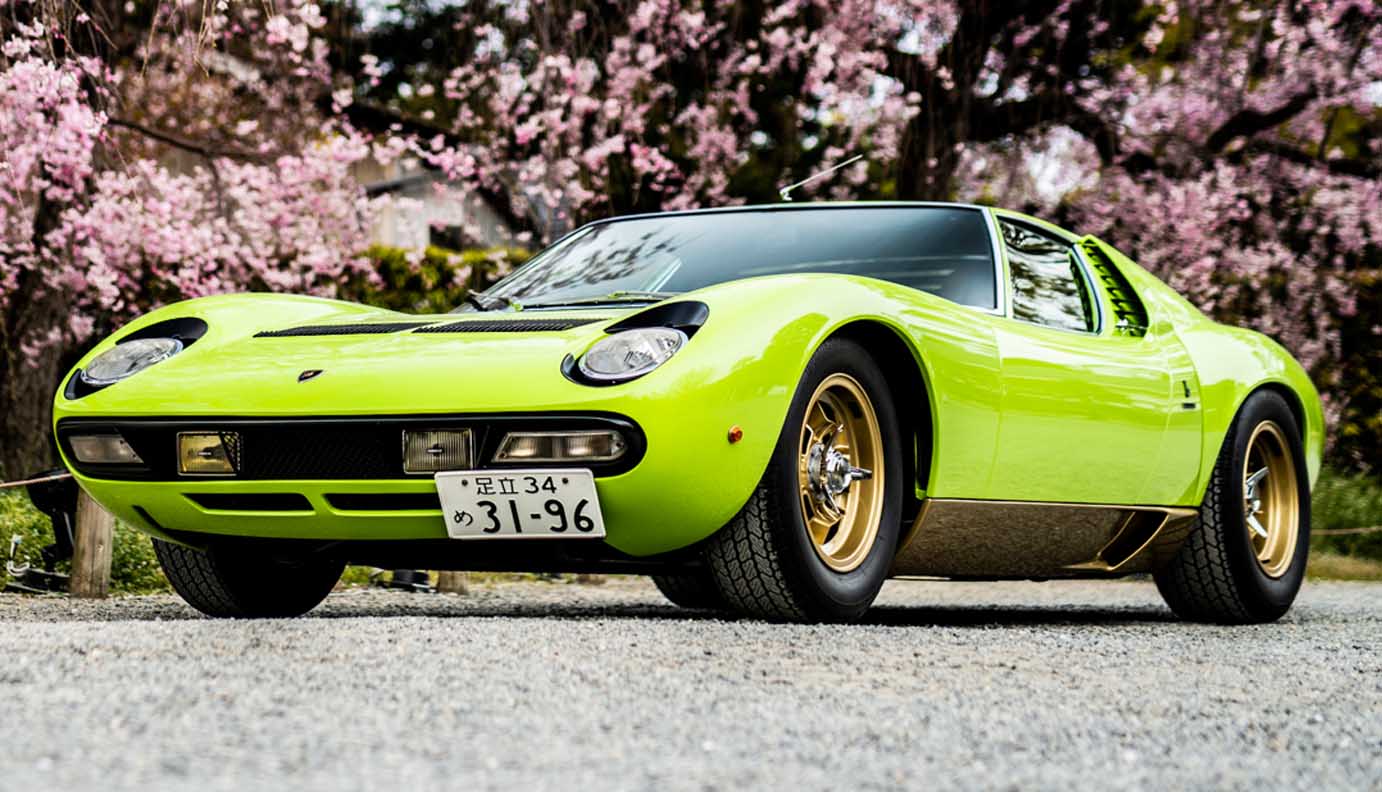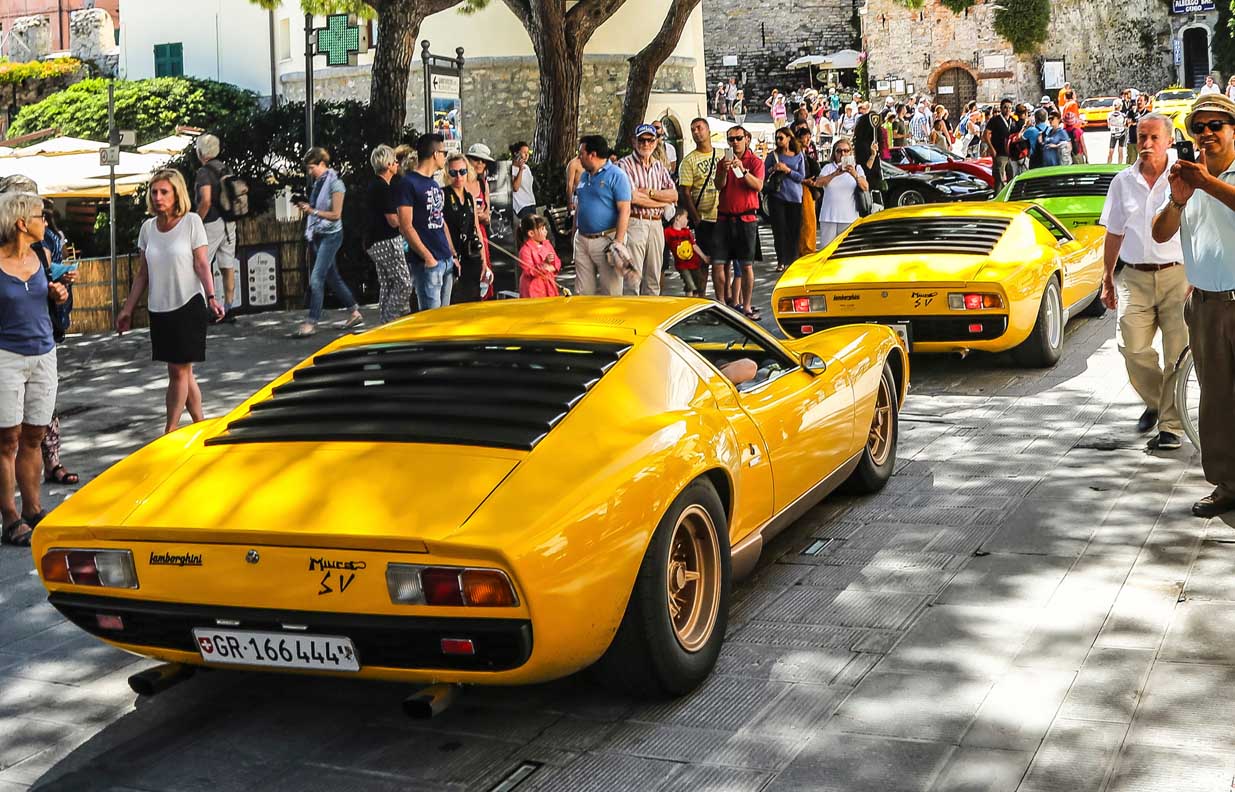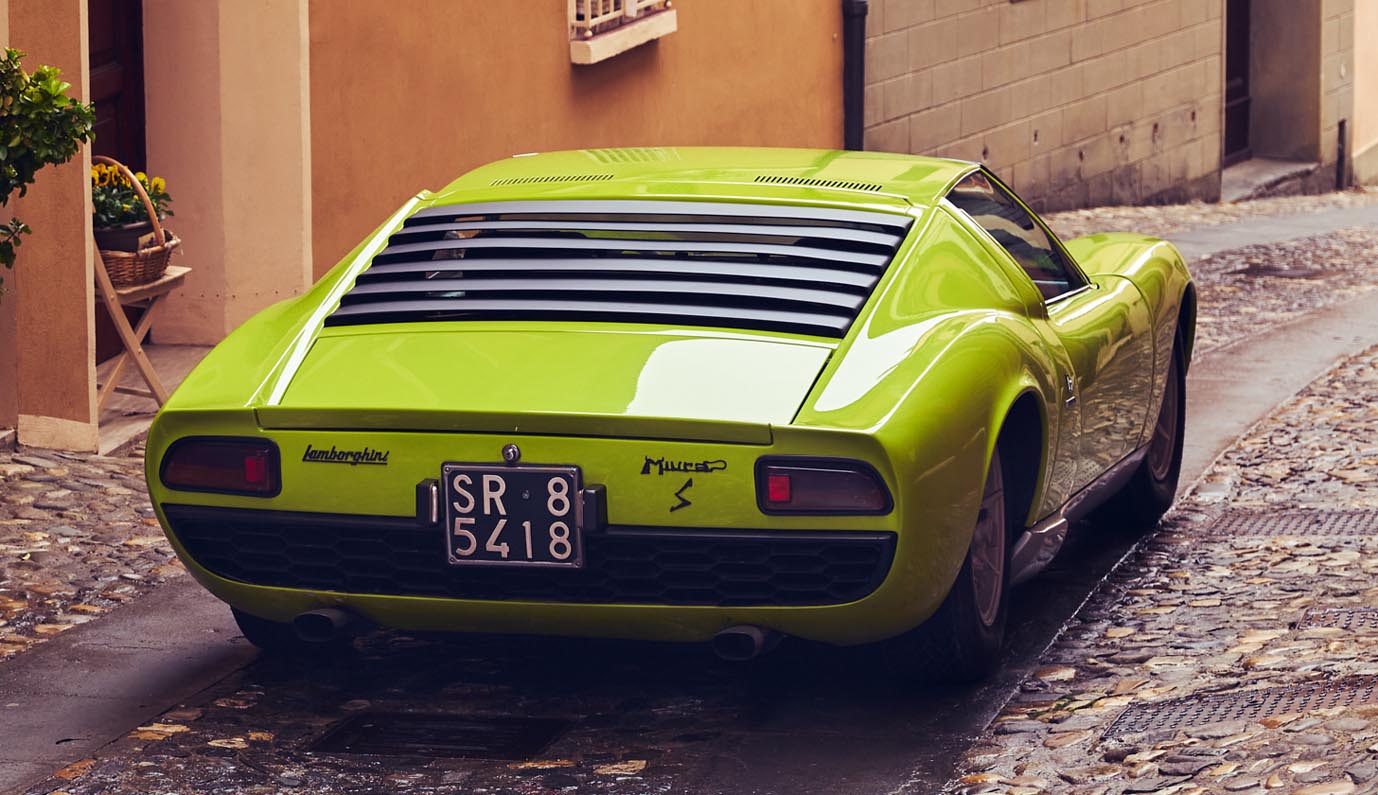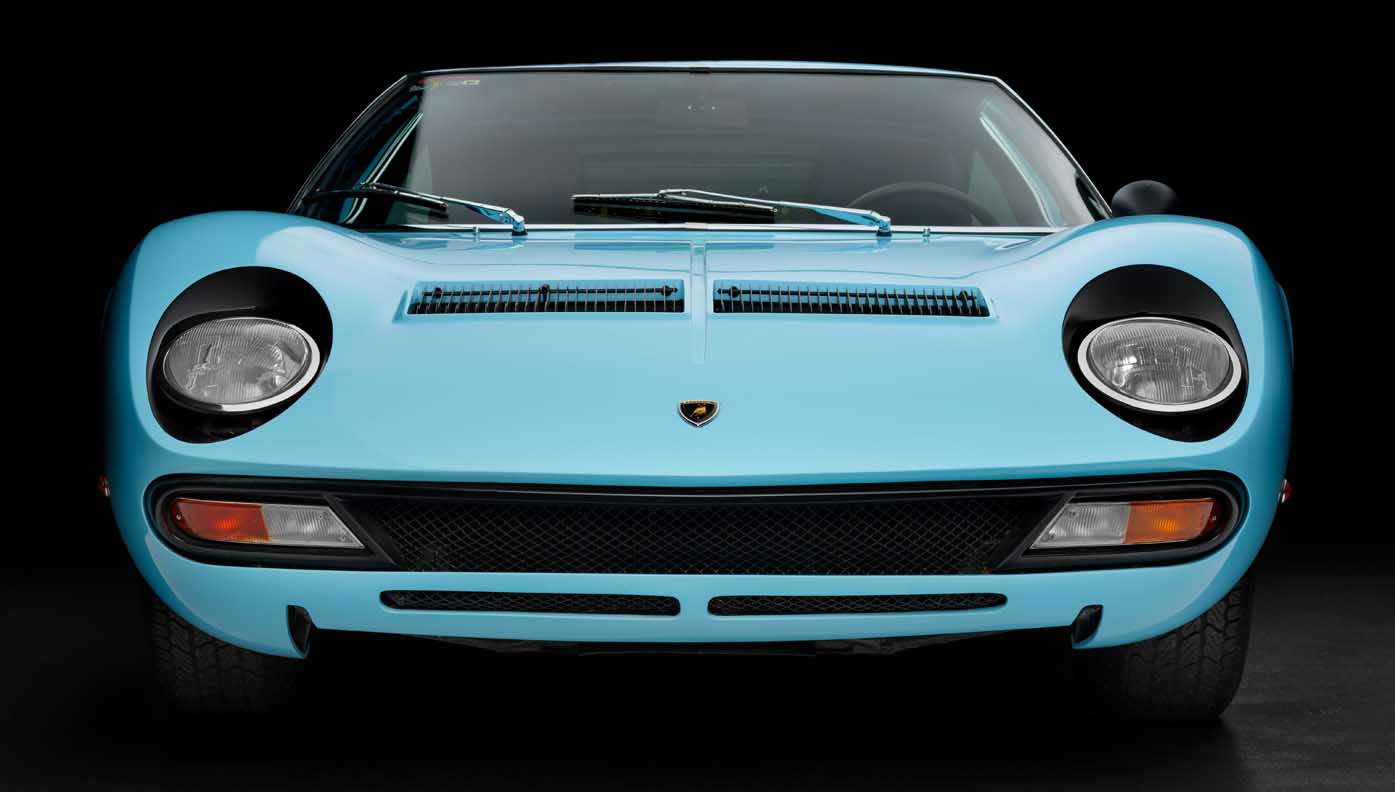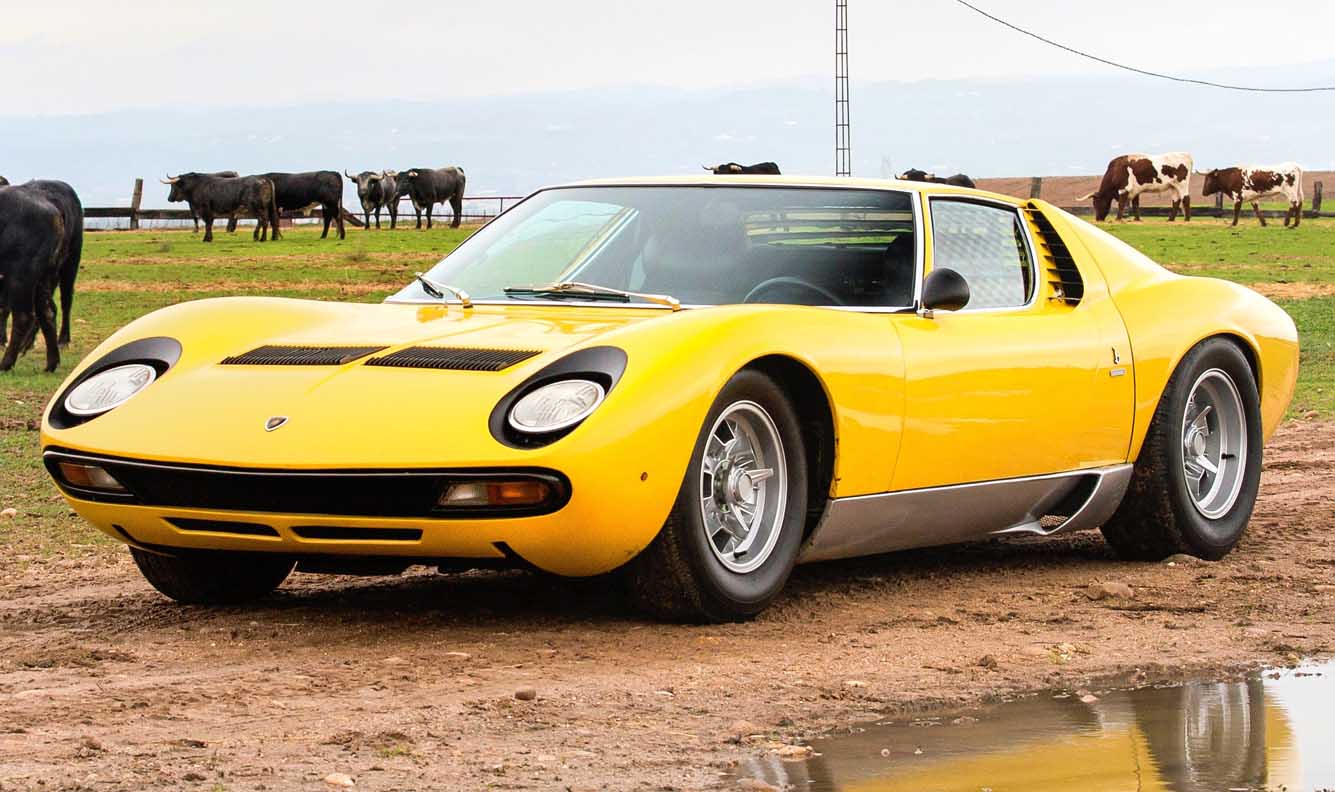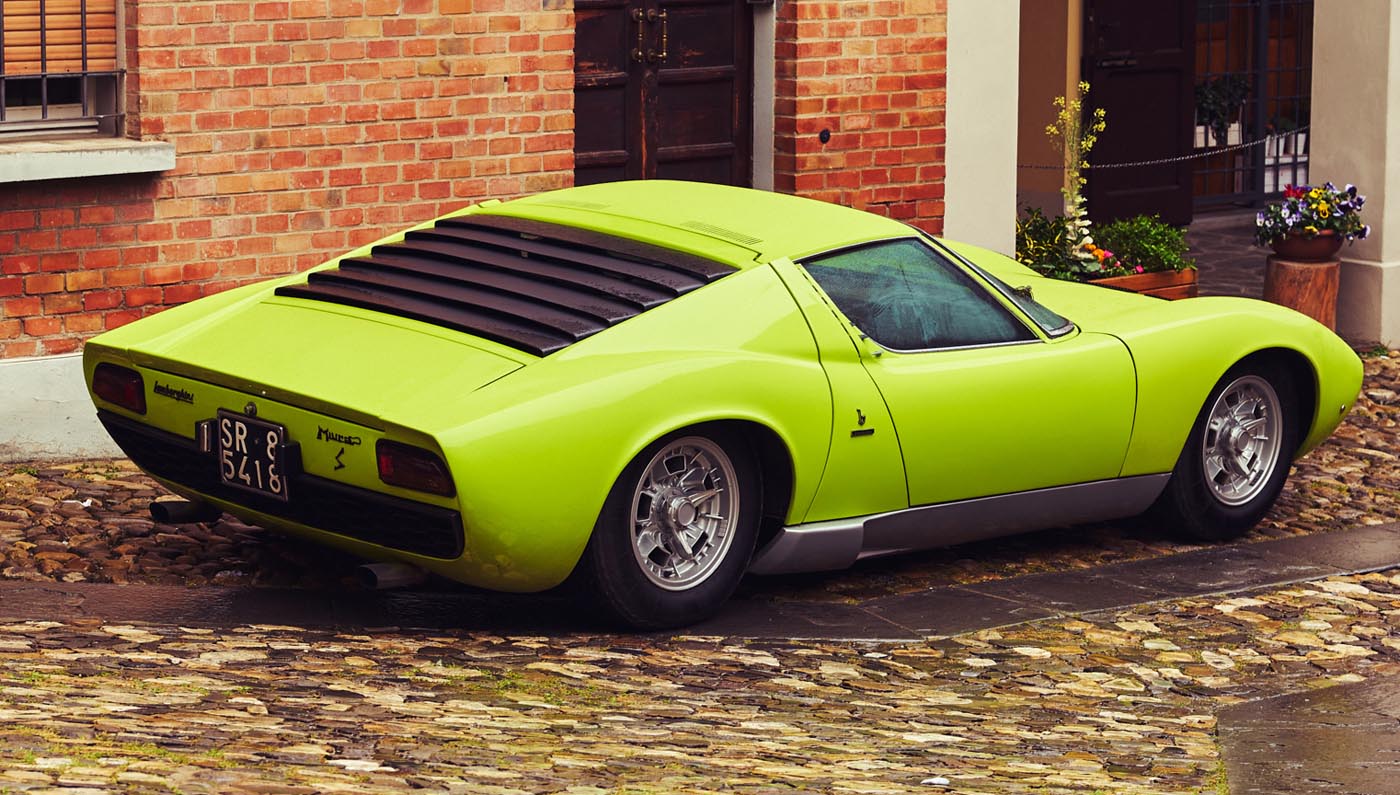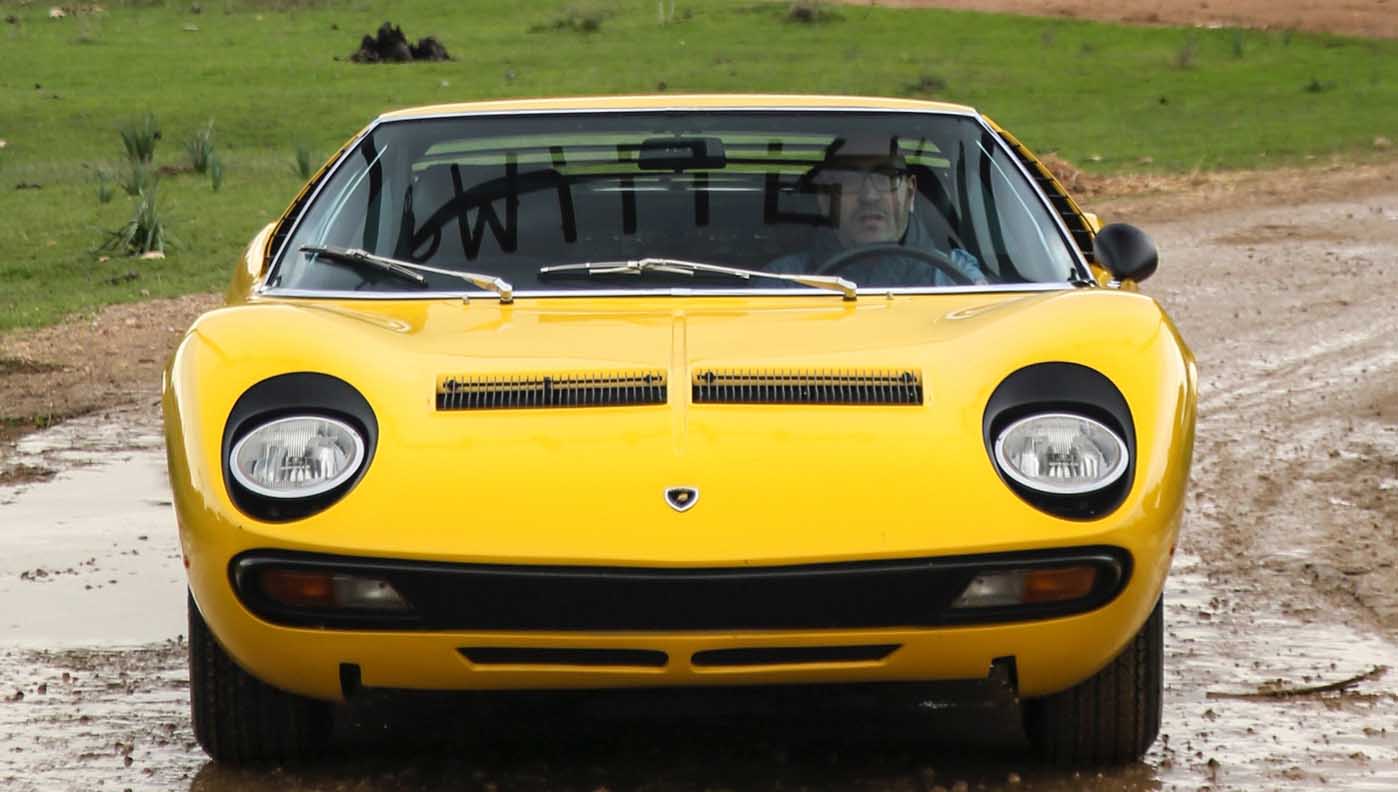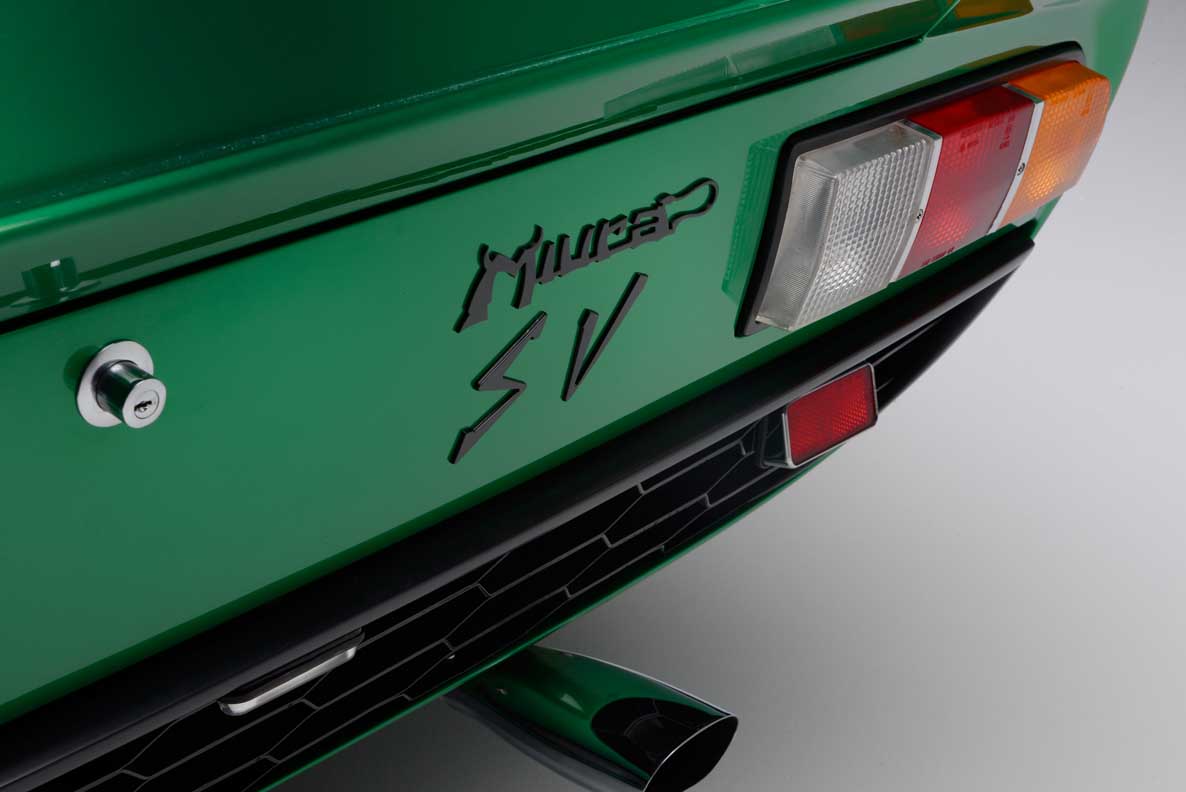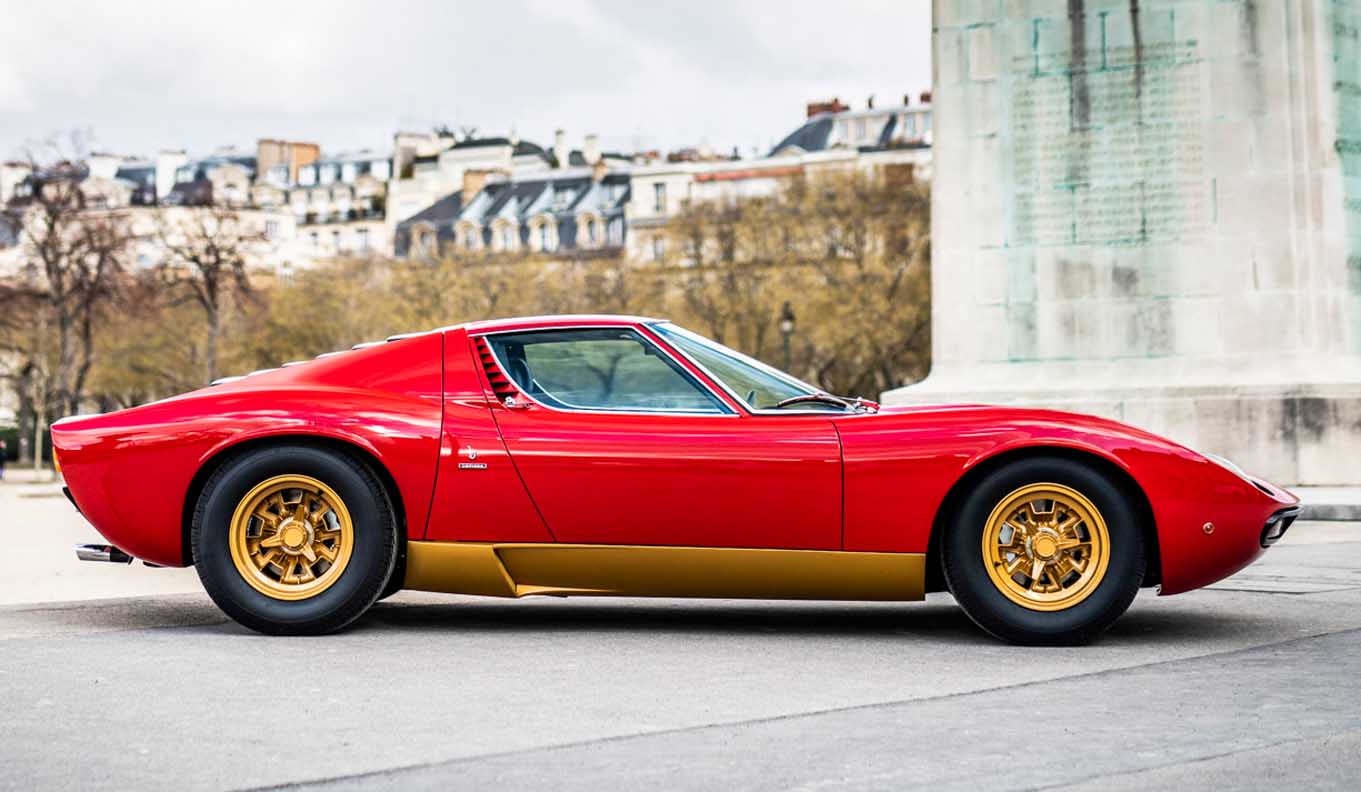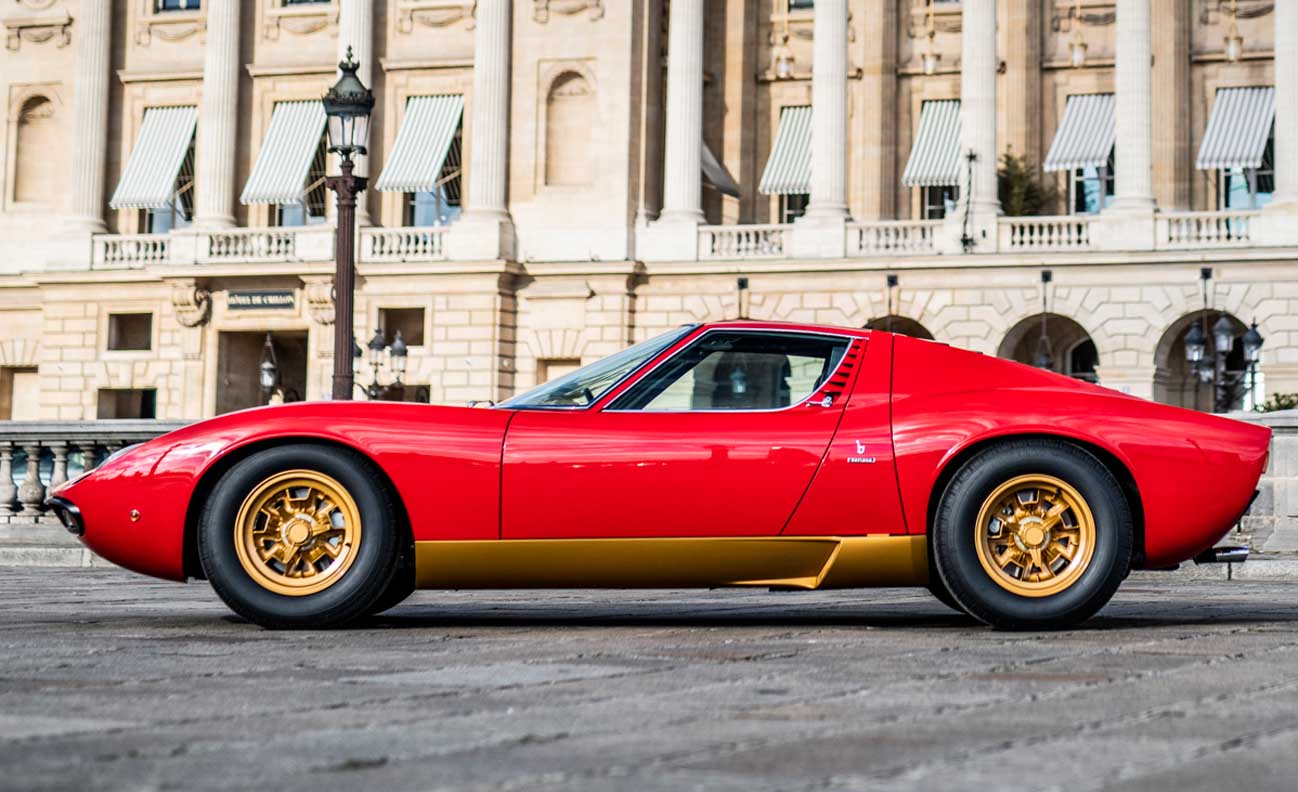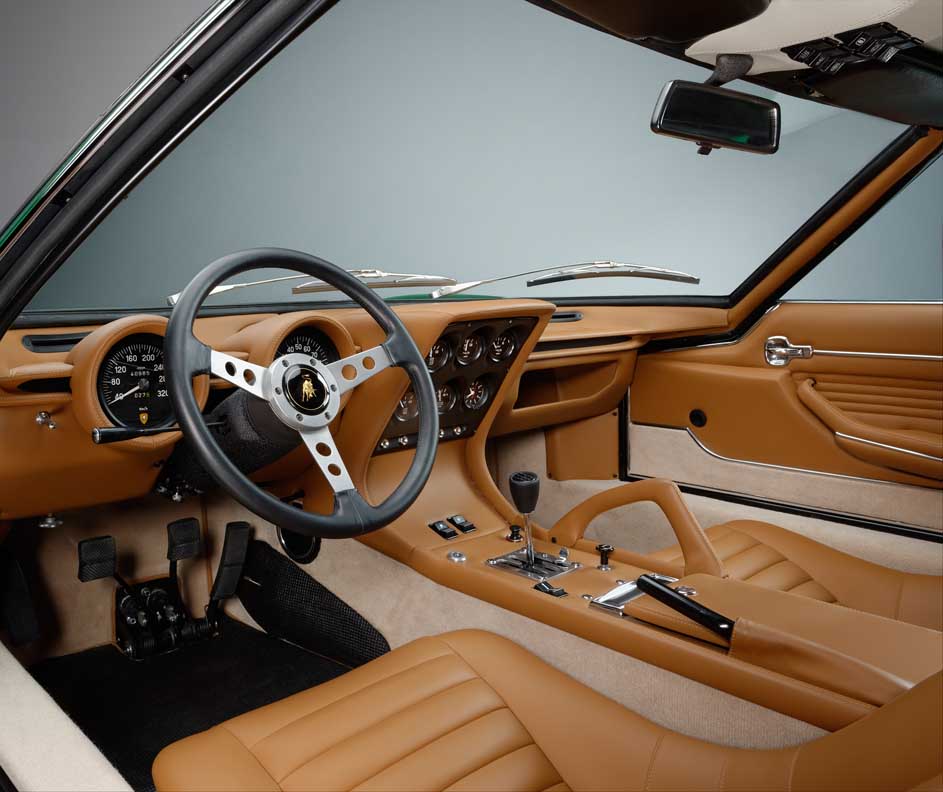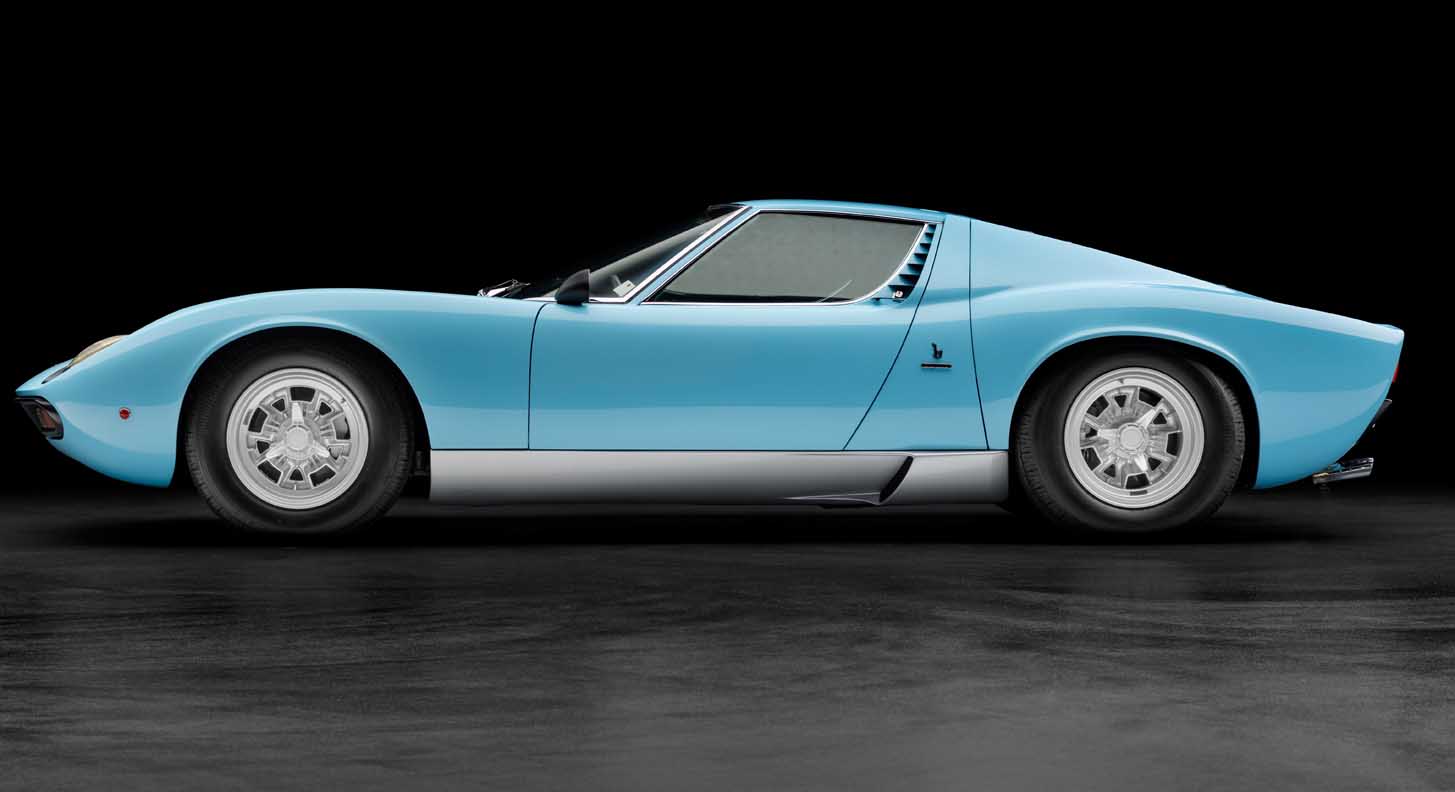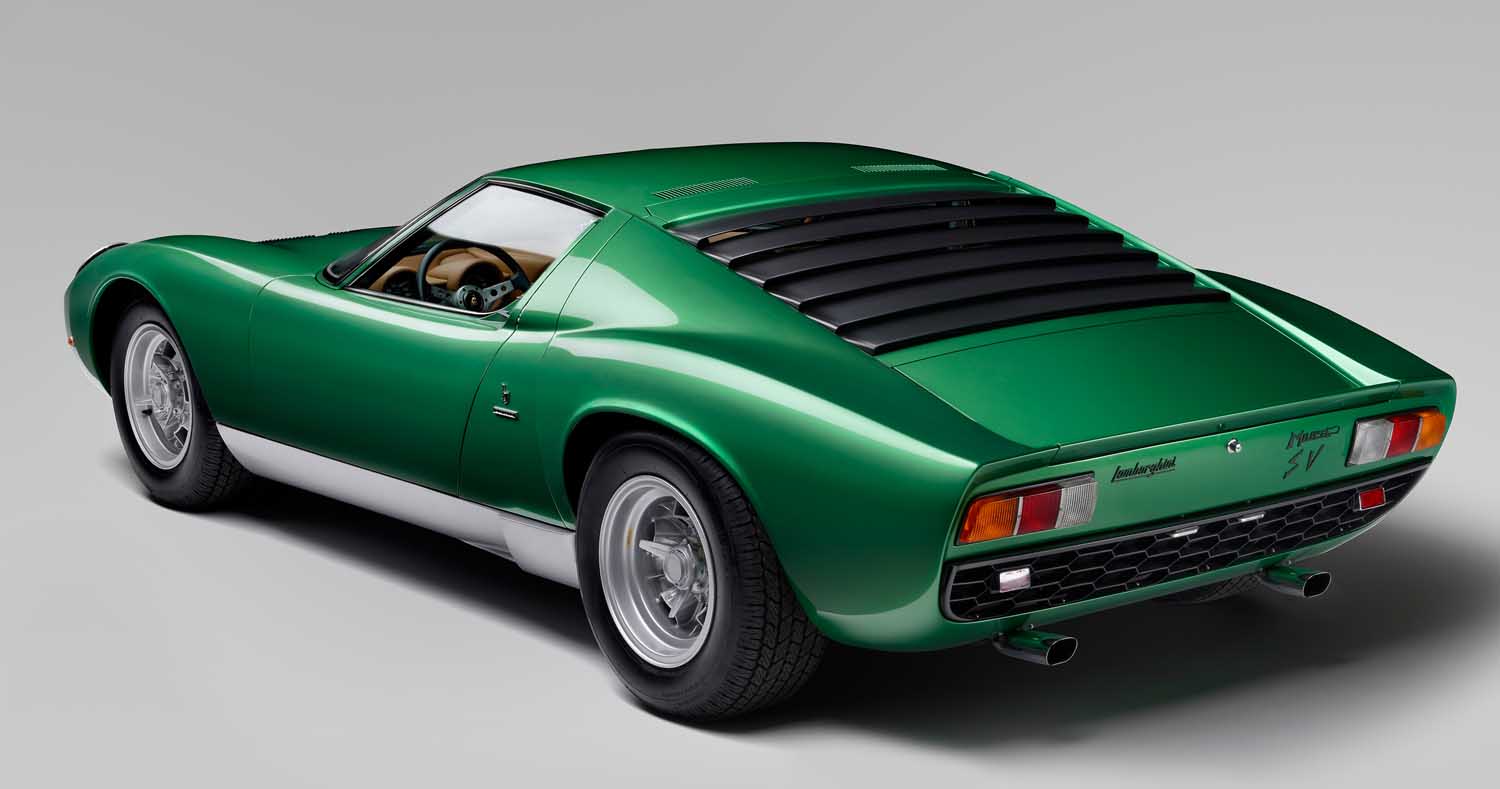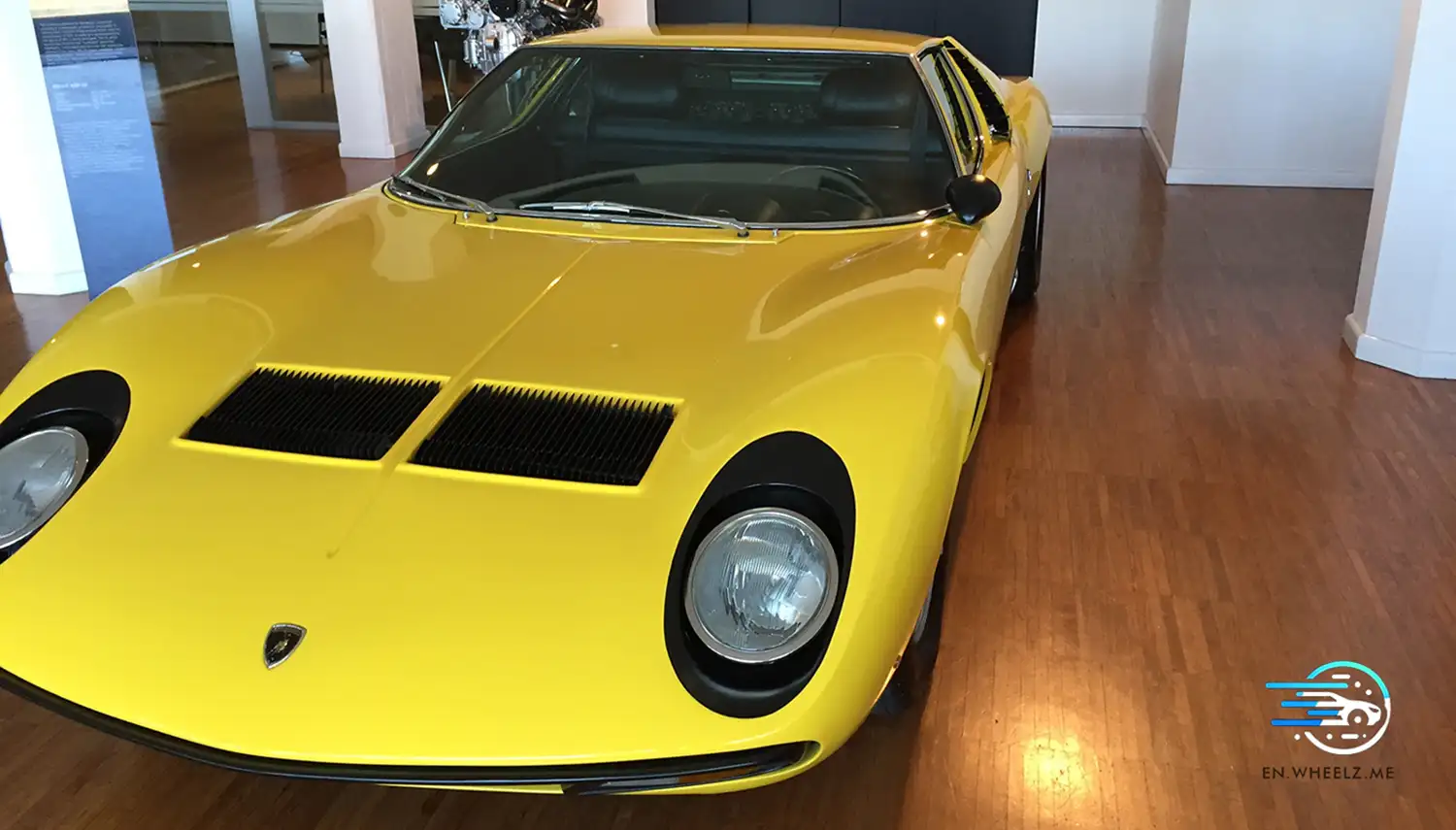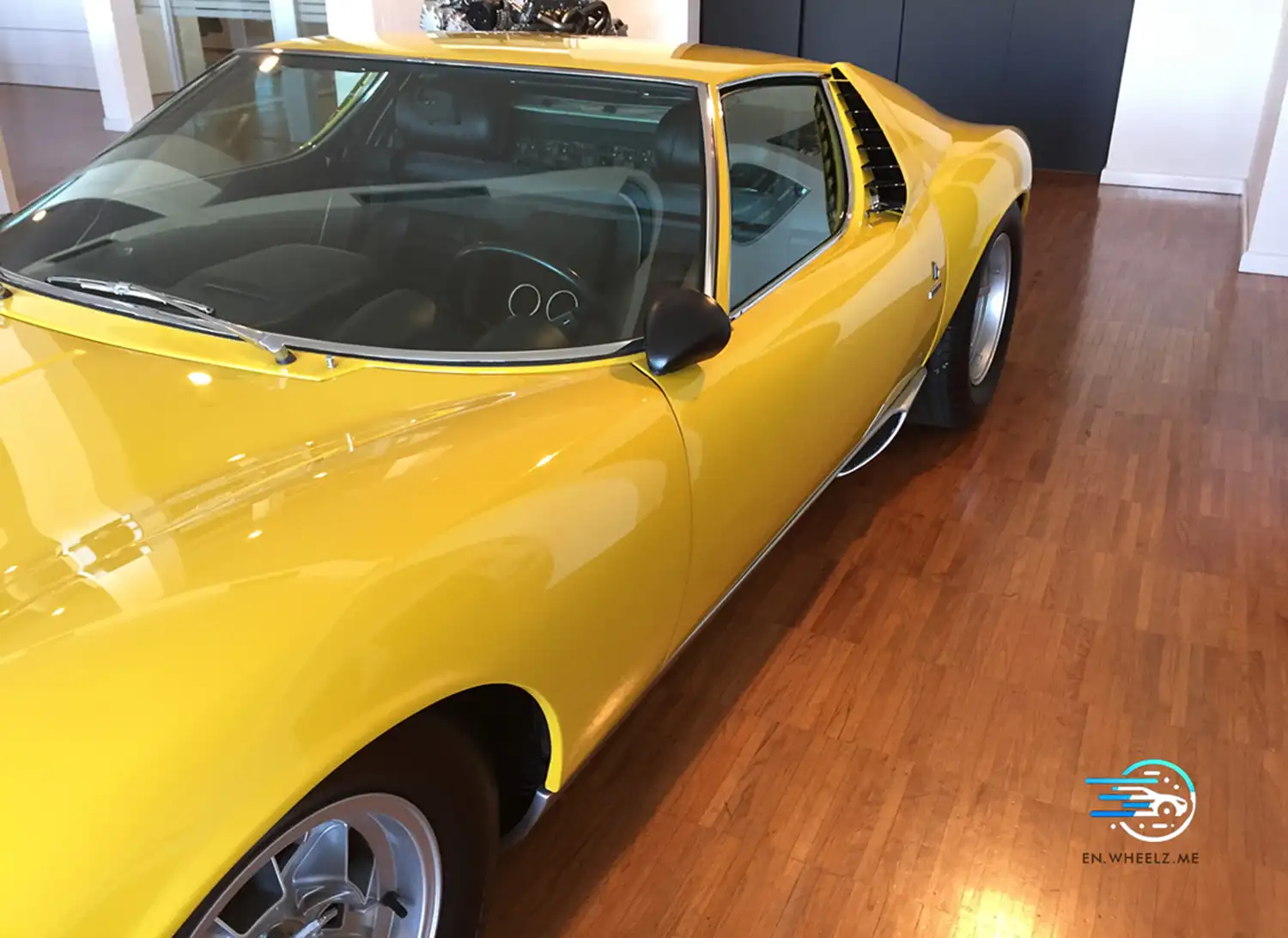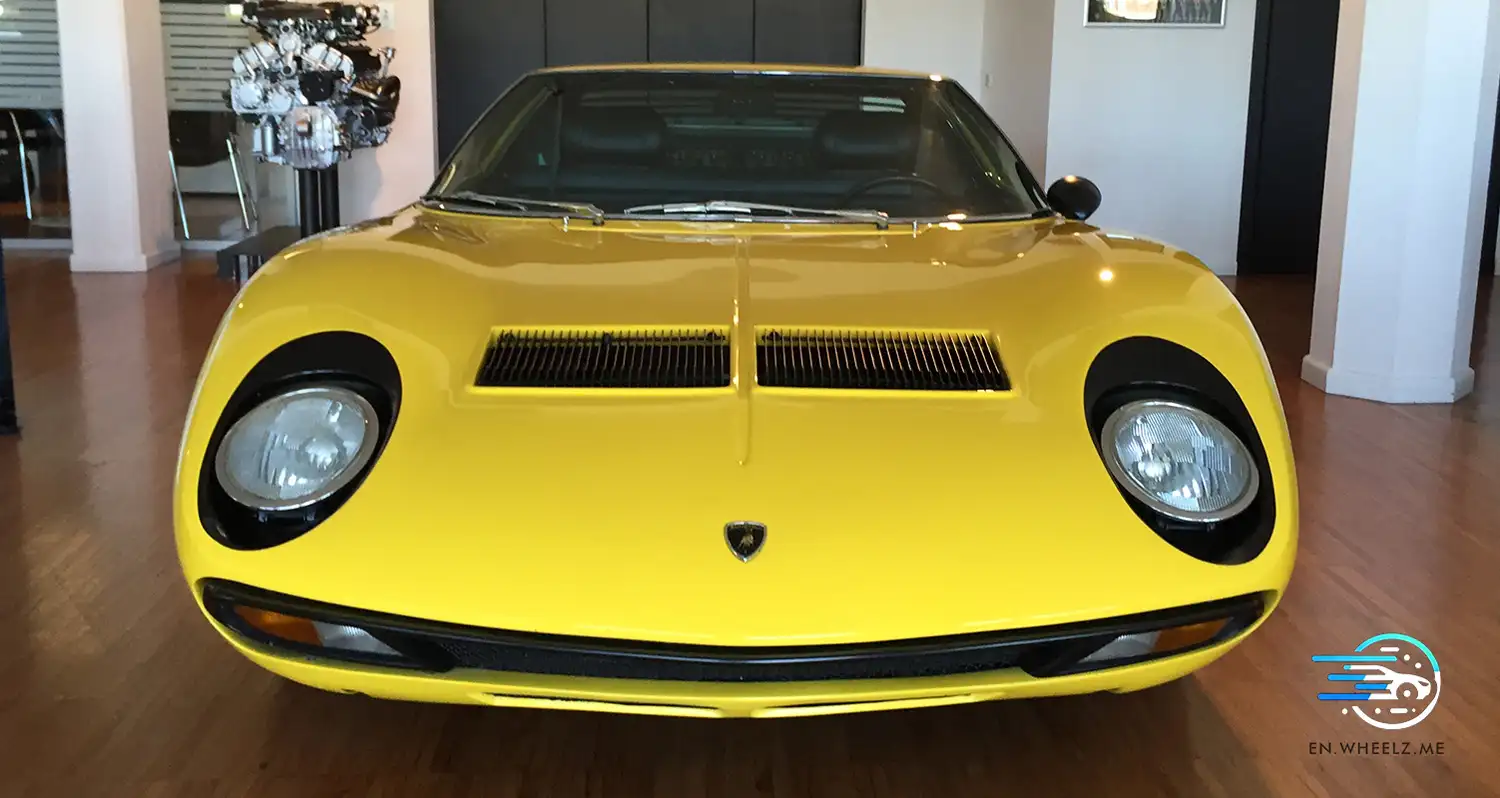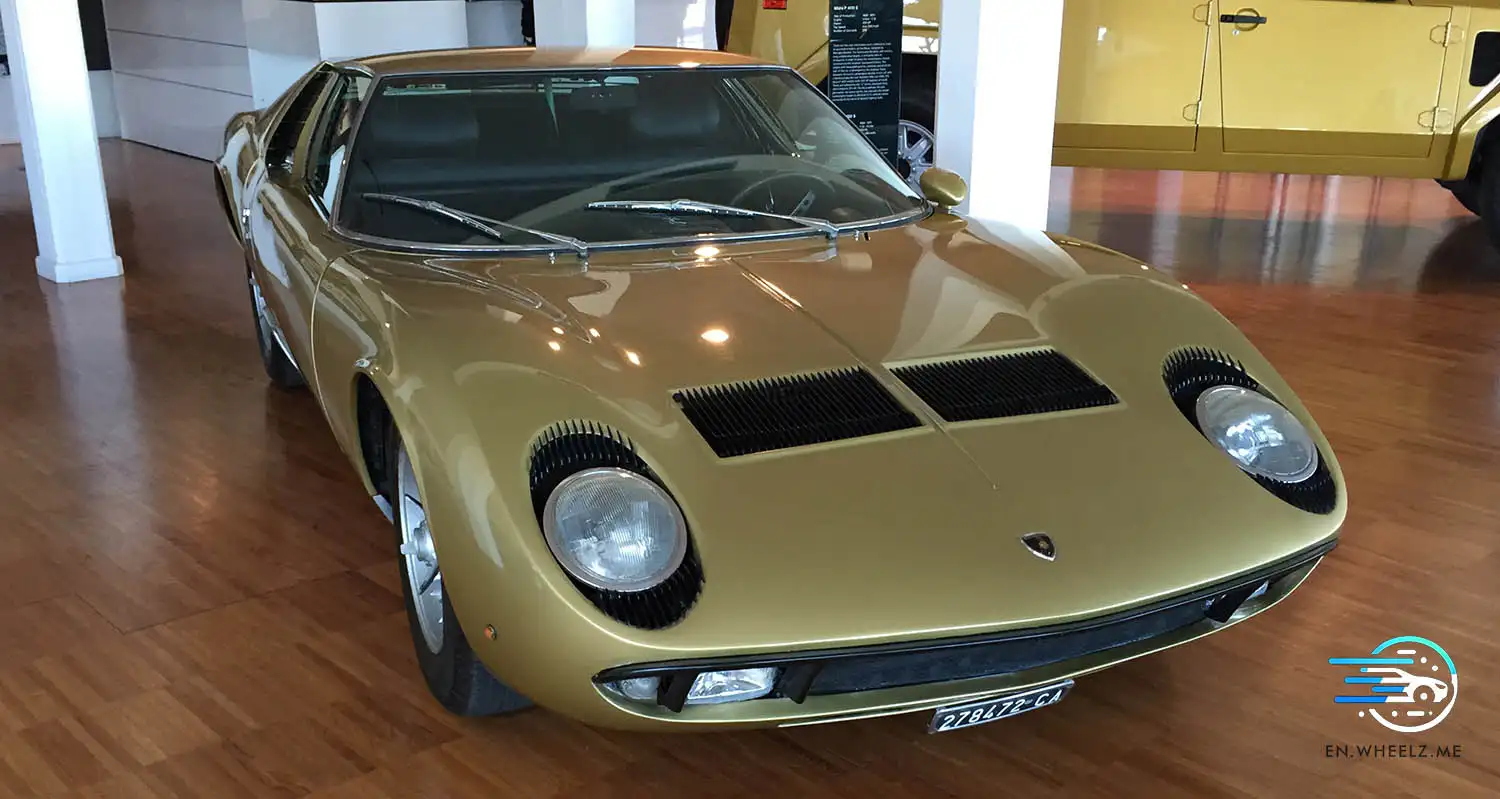
The Lamborghini Miura is more than just a car; it’s a symbol of automotive passion, engineering innovation, and Italian flair. Introduced in 1966 at the Geneva Motor Show, the Miura stunned the world with its revolutionary mid-engine layout, sleek design, and blistering performance.
Designed by Marcello Gandini at Bertone, the Miura was a bold departure from traditional automotive design. Its low-slung silhouette, aggressive lines, and signature “eyelashes” over the headlights captured the imagination of enthusiasts and set a new standard for exotic sports cars.
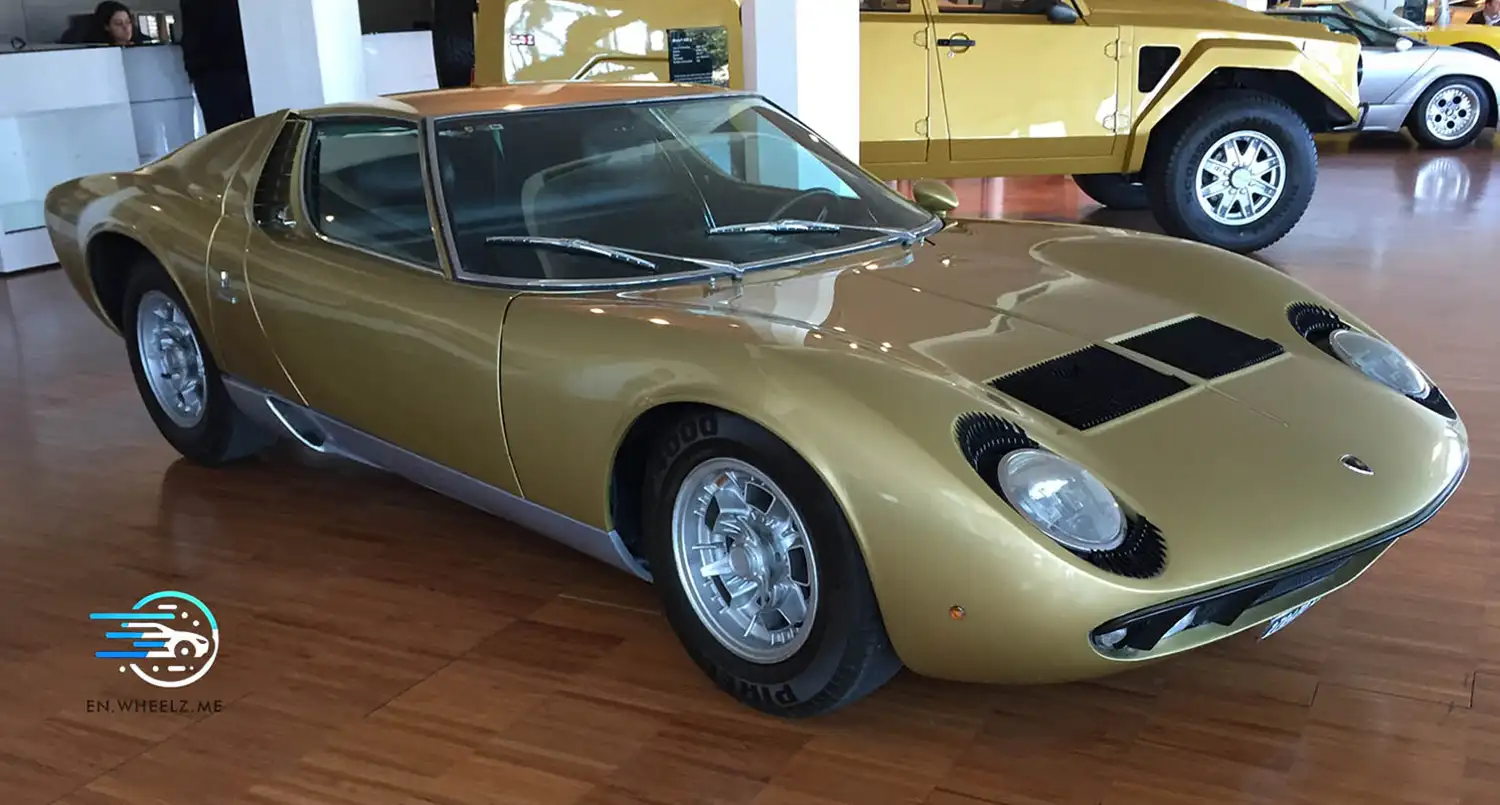
Underneath its captivating exterior, the Miura boasted cutting-edge technology for its time. Powering the car was a transversely mounted 3.9-liter V12 engine, producing around 350 horsepower. This mid-mounted powerplant, coupled with a lightweight chassis, enabled the Miura to achieve breathtaking acceleration and handling dynamics.
The Miura wasn’t just about raw performance; it was also a symbol of luxury and sophistication. Its interior featured plush leather seats, a sleek dashboard, and a host of amenities, making it a comfortable grand tourer as well as a formidable track machine.
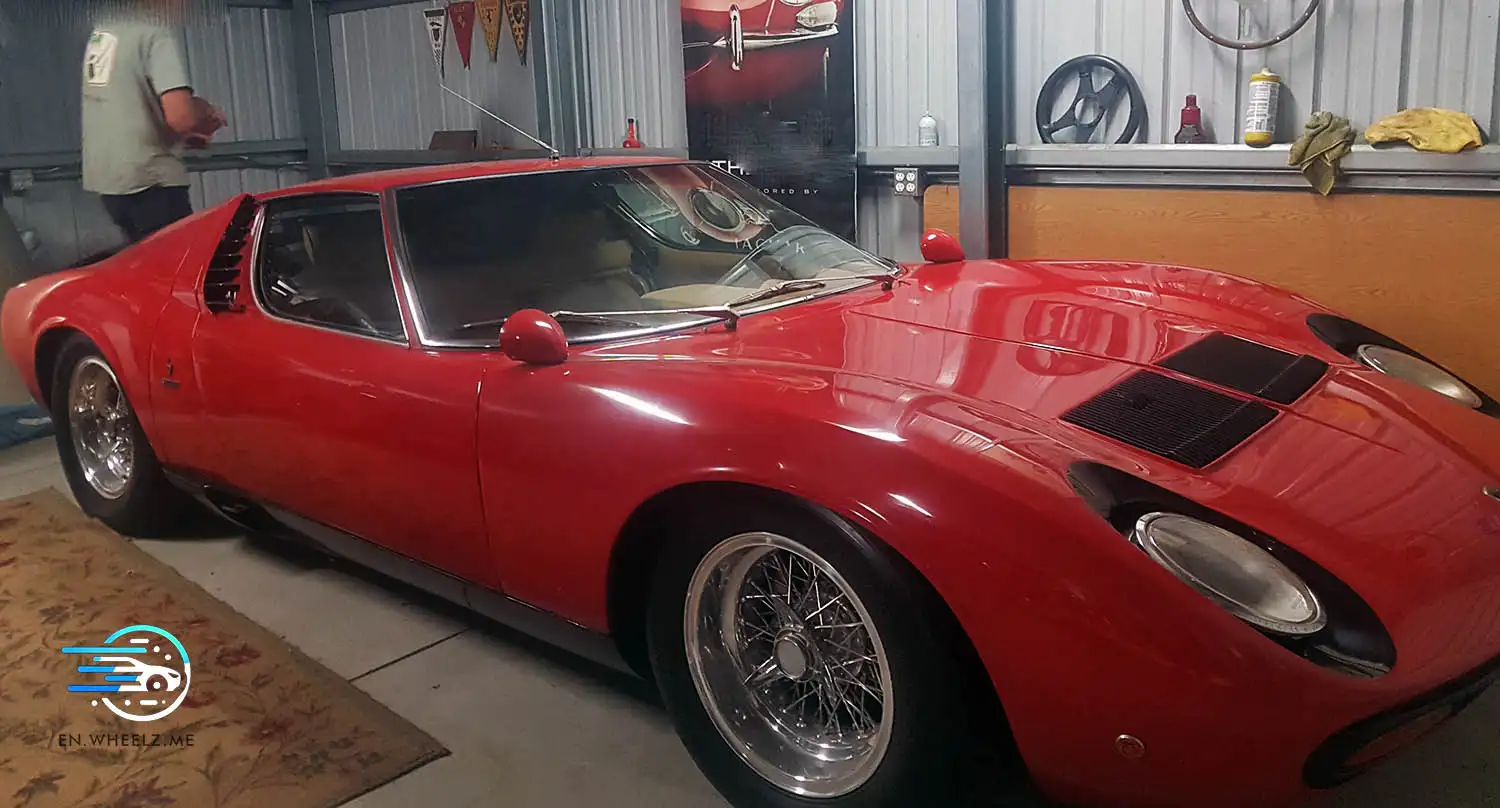
Throughout its production run from 1966 to 1973, the Miura underwent several iterations and improvements. The initial P400 model was later succeeded by the P400S, featuring updates such as power windows, improved brakes, and enhanced handling.
Beyond its technical prowess, the Miura became a cultural icon, appearing in films, music videos, and countless works of art. Its timeless design continues to inspire automotive enthusiasts and designers alike, cementing its status as one of the most iconic cars ever created.
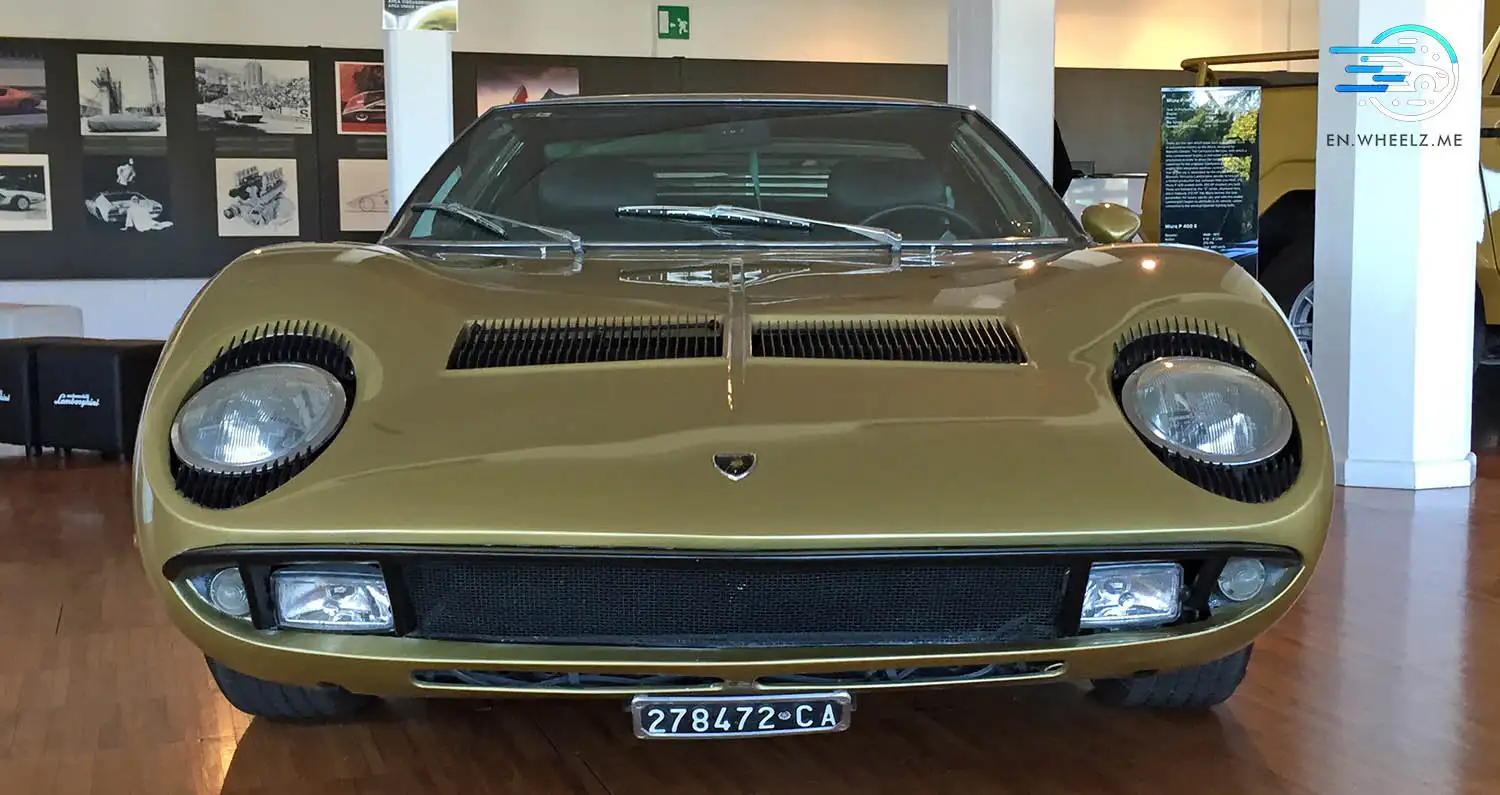
Today, the Lamborghini Miura is revered by collectors and enthusiasts worldwide. Its rarity, timeless design, and historical significance have made it a prized possession among automotive connoisseurs, with well-maintained examples fetching millions at auctions.
In an ever-changing automotive landscape, the Lamborghini Miura remains a beacon of passion, performance, and style—a true testament to the enduring legacy of one of Italy’s most celebrated automakers.

Timeline
- 1965: Development of the Lamborghini Miura begins under the direction of Gian Paolo Dallara, Paolo Stanzani, and designer Marcello Gandini at Bertone.
- 1966: The Lamborghini Miura P400 is unveiled at the Geneva Motor Show in March. Its mid-engine layout, sleek design, and impressive performance captivate the automotive world.
- 1967: Production of the Miura begins, with the first customer deliveries taking place later in the year. The Miura quickly earns a reputation as one of the most desirable and iconic sports cars of its era.
- 1968: The Miura makes its film debut in the opening sequence of the original “The Italian Job,” further solidifying its status as a cultural icon.
- 1969: Lamborghini introduces the Miura P400S (S for “Spinto,” meaning pushed), featuring various updates including power windows, improved brakes, and enhanced handling.
- 1971: The Miura SV (Super Veloce) is introduced, boasting a more powerful 385 horsepower engine, revised suspension, and other performance enhancements. It becomes the ultimate expression of the Miura.
- 1973: Production of the Lamborghini Miura concludes after approximately 764 units are built across all variants. The Miura’s legacy as one of the most iconic and groundbreaking sports cars of all time is firmly established.
- 1985: The Lamborghini Miura celebrates its 20th anniversary, with the introduction of the Miura Concept at the 1985 Geneva Motor Show. The concept pays homage to the original Miura while showcasing modern design elements.
- 2006: Lamborghini celebrates the 40th anniversary of the Miura with the unveiling of the Miura Concept at the North American International Auto Show in Detroit. The concept features retro-inspired styling cues combined with contemporary engineering.
- 2021: The Lamborghini Miura continues to be celebrated by enthusiasts and collectors worldwide, with well-maintained examples commanding high prices at auctions and events. Its timeless design and groundbreaking engineering ensure its place in automotive history for generations to come.
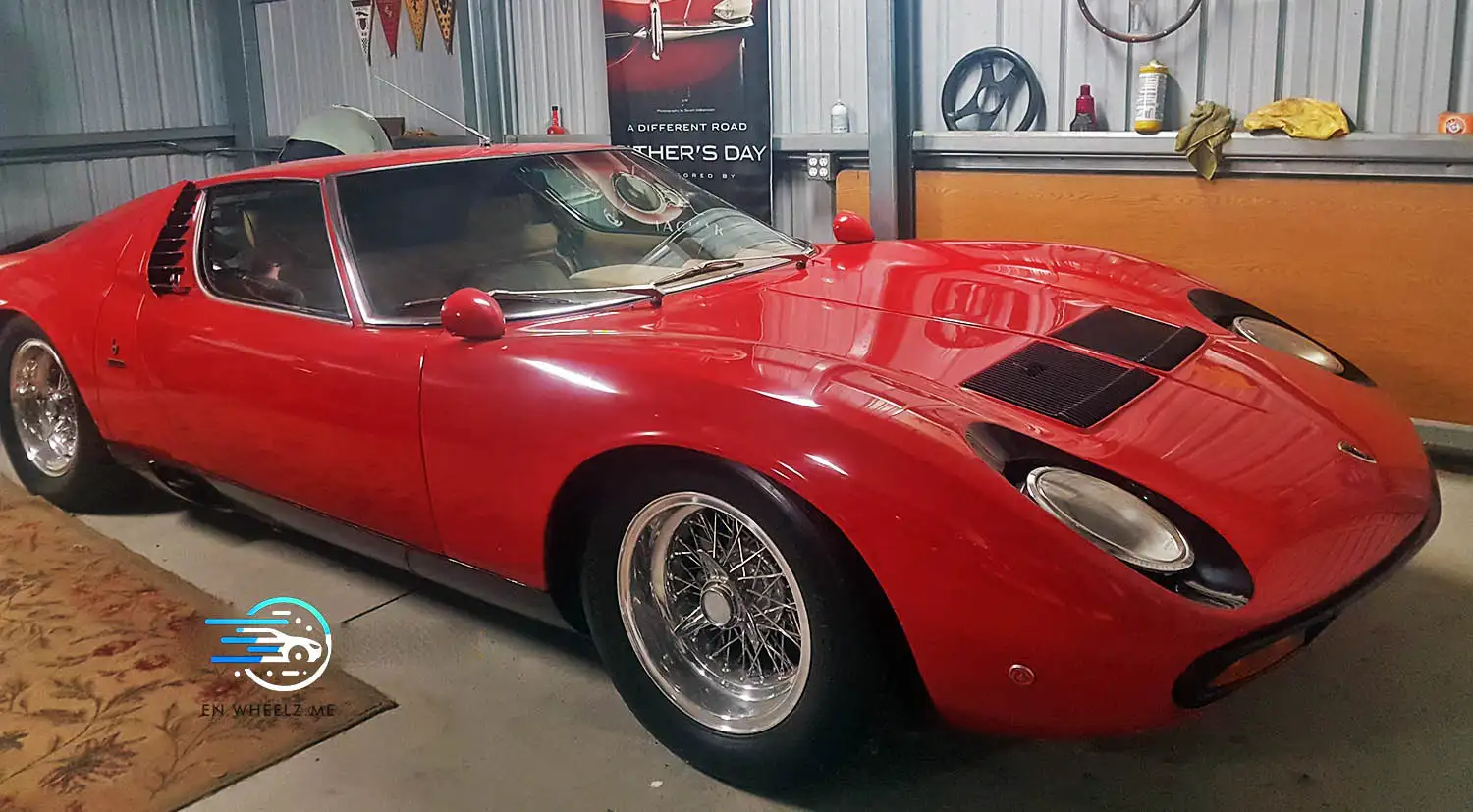
Specs
Lamborghini Miura P400 (1966-1968):
- Engine: 3.9-liter V12
- Power: Approximately 350 horsepower
- Transmission: 5-speed manual
- 0-60 mph (0-97 km/h): Approximately 6.7 seconds
- Top Speed: Approximately 171 mph (275 km/h)
- Production Quantity: Approximately 275 units
Lamborghini Miura P400S (1968-1971):
- Engine: 3.9-liter V12
- Power: Approximately 370 horsepower
- Transmission: 5-speed manual
- 0-60 mph (0-97 km/h): Approximately 6.5 seconds
- Top Speed: Approximately 171 mph (275 km/h)
- Production Quantity: Approximately 338 units
Lamborghini Miura SV (1971-1973):
- Engine: 3.9-liter V12
- Power: Approximately 385 horsepower
- Transmission: 5-speed manual
- 0-60 mph (0-97 km/h): Approximately 5.8 seconds
- Top Speed: Approximately 180 mph (290 km/h)
- Production Quantity: Approximately 150 units
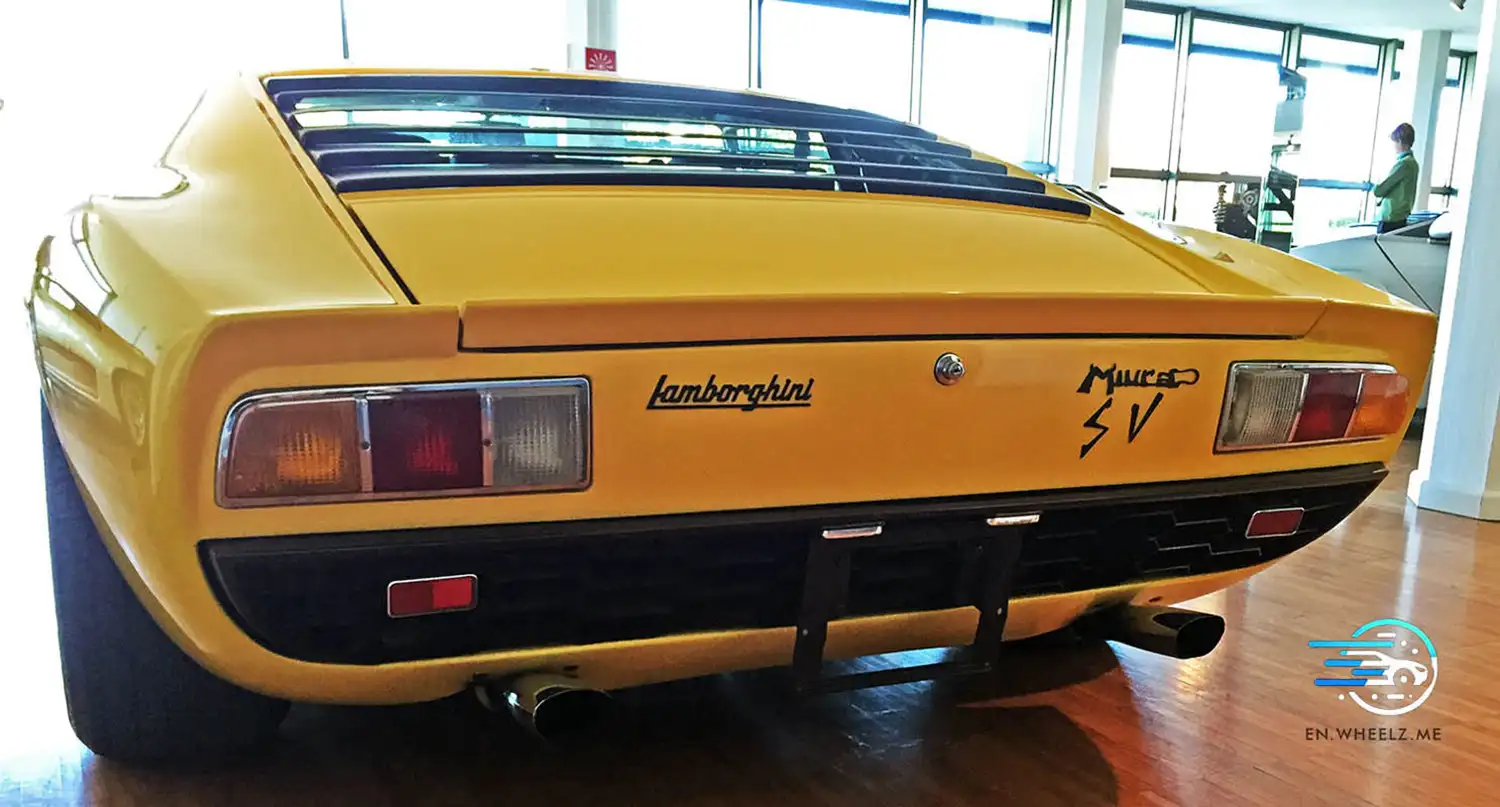
Estimated Prices
- Lamborghini Miura P400 (1966-1968): Average Price Range: $1,000,000 – $1,500,000 USD
- Lamborghini Miura P400S (1968-1971): Average Price Range: $1,500,000 – $2,000,000 USD
- Lamborghini Miura SV (1971-1973): Average Price Range: $2,000,000 – $3,000,000 USD

Lamborghini Miura SVR
The Lamborghini Miura SVR is a rare and highly sought-after variant that was produced in limited numbers. It was essentially a racing version of the Miura SV, modified for competition use.
Lamborghini Miura SVR (1975):
- Engine: 4.0-liter V12
- Power: Approximately 418 horsepower
- Transmission: 5-speed manual
- 0-60 mph (0-97 km/h): Approximately 5.8 seconds
- Top Speed: Approximately 186 mph (300 km/h)
- Production Quantity: Only 1 unit was built
Estimated Price:
- Due to its extreme rarity and racing pedigree, the Lamborghini Miura SVR commands a significantly higher price compared to other Miura variants.
- Estimated Price Range: $2,500,000 – $4,000,000 USD
The Lamborghini Miura SVR is considered one of the most exclusive and valuable Lamborghinis ever produced, with its combination of performance, rarity, and historical significance making it highly desirable among collectors and enthusiasts.
This article uses material from Chatgpt
